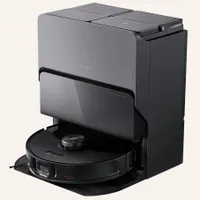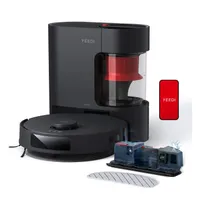The best robot vacuum: top robovacs to keep every home dust-free
Low-effort, fuss-free robovacs to take care of your daily cleaning

Investing in one of the best robot vacuums can revolutionize your cleaning routine. They're perfect for taking care of regular vacuuming (and increasingly, mopping too) with next-to-no effort from you, and you can set them to run when you're out of the house, for minimal disruption.
The market ranges from ultra-simple to extremely capable, with price tags to match, so it's important to pick the right one for your needs. I'm here to help with that. TechRadar's testers have been reviewing robot vacuums since 2015, and we've tested nearly 100 different models in total. I've used our in-depth reviews to compare different models and put together this ranking.
Right now, the best robot vacuum on the market is the Roborock Qrevo Curv (#1). On test, this robot vacuum delivered superb suctions and excellent mopping, as well as being ultra-reliable and easy to use. If you're on a tighter budget, consider the simpler but still very capable Roborock Q7 M5 (#3). Alternatively, read on for a range of options for different needs and budgets. And if you want to supplement your robovac with a manual model for stairs and deep cleans, head to my guide to the best cordless vacuum cleaners.

Ruth is a Homes Editor at TechRadar, and has been reviewing consumer tech for over three years. She's spent the past year and a half focusing on home appliances, and floor cleaners in particular.
Today's best robot vacuums – as tested by experts
Why you can trust TechRadar
The best robot vacuum for most people
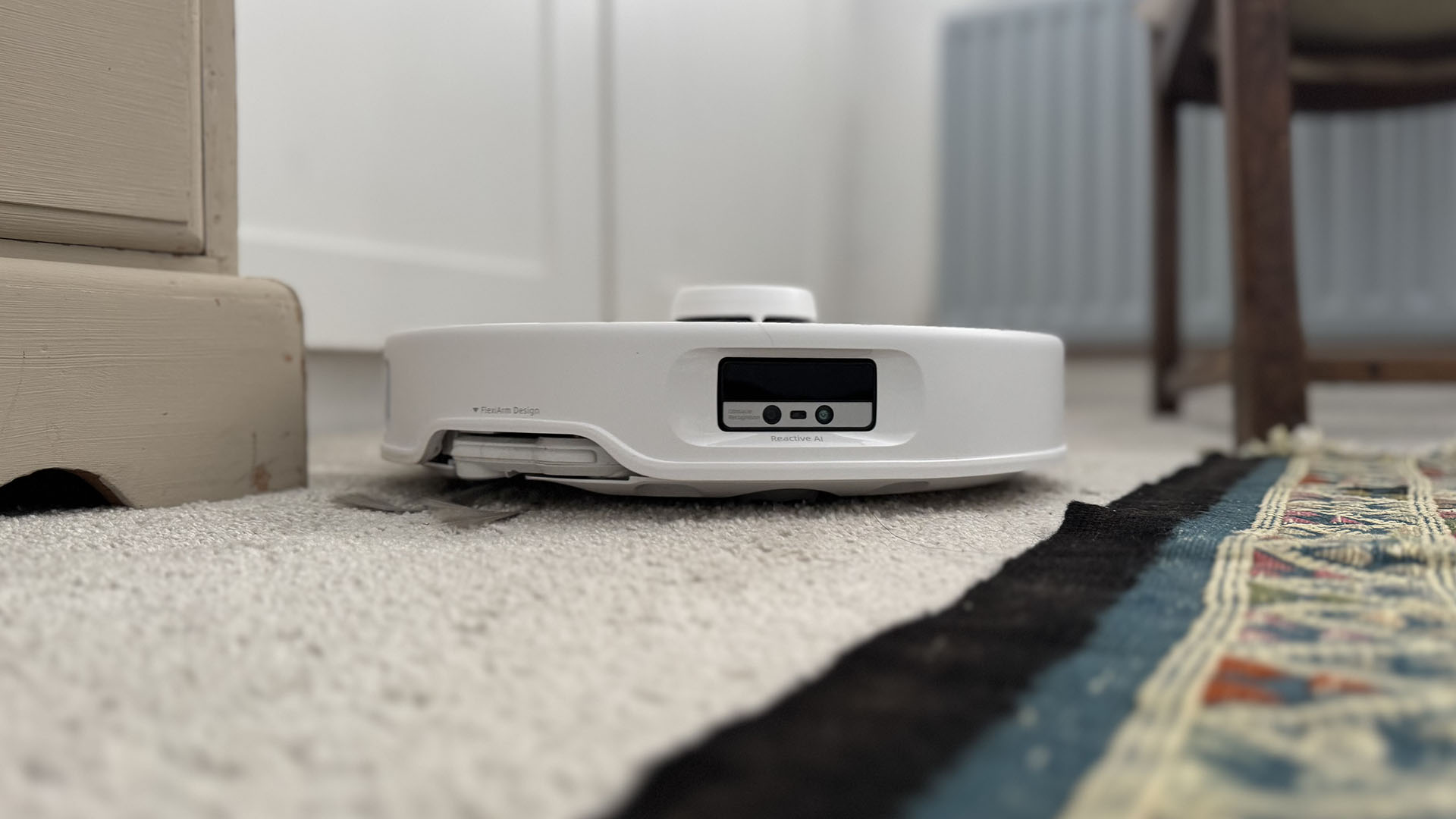
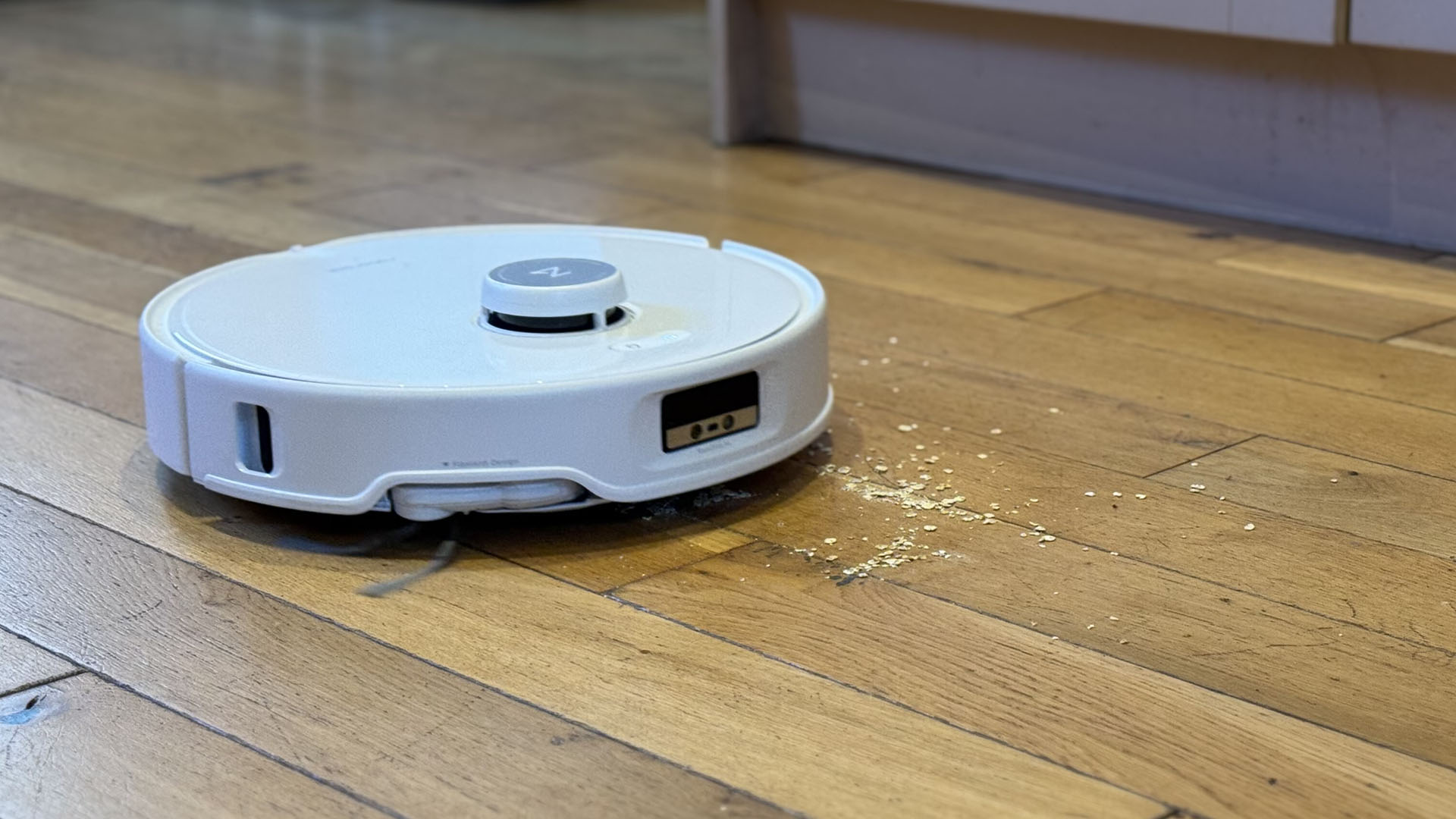
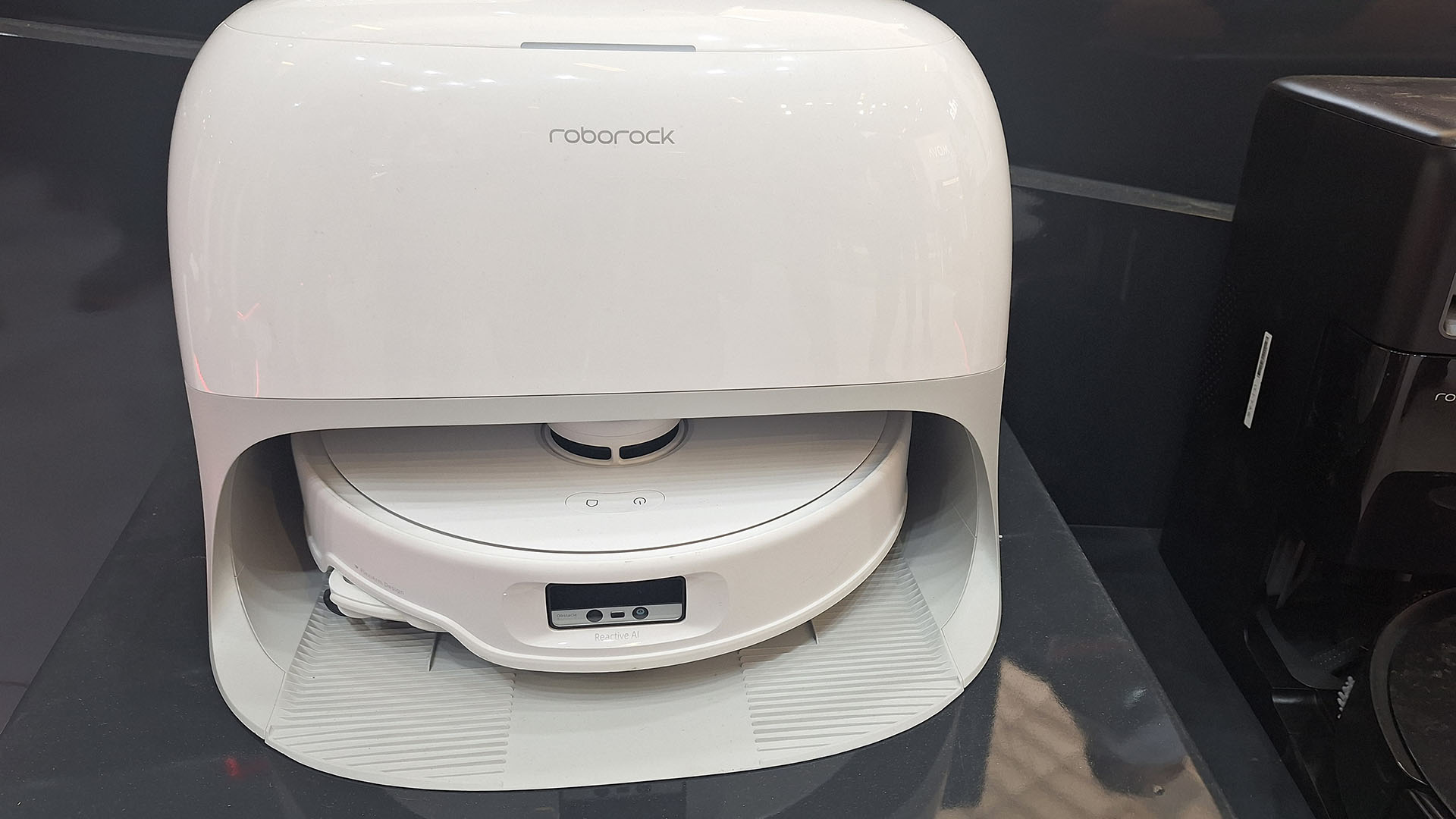
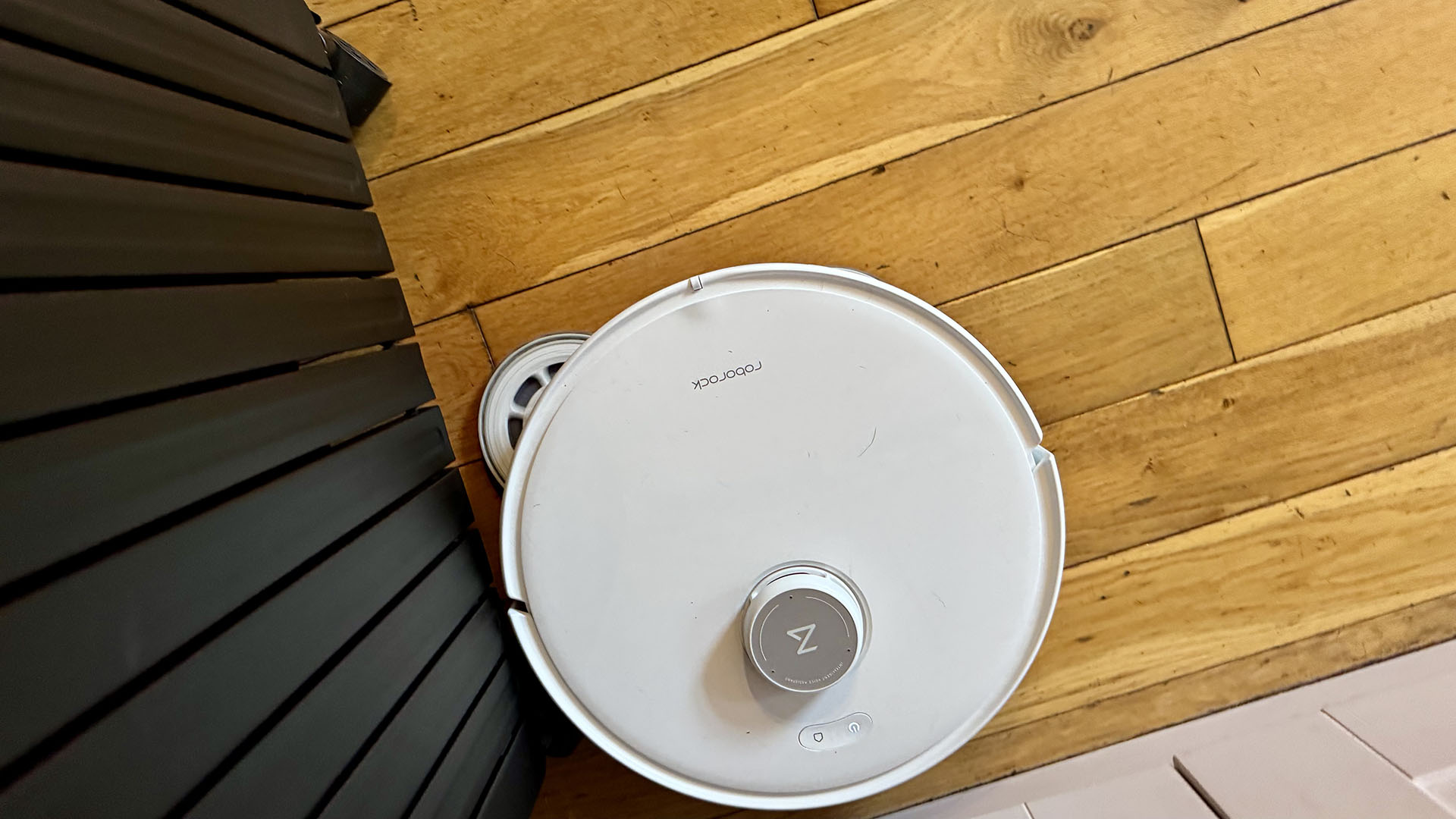
Specifications
Reasons to buy
Reasons to avoid
✅ You want a truly autonomous robovac: This premium robot vacuum can be relied upon to take care of itself.
✅ You have tall thresholds: The Curv is great at scaling tall steps, and on test it very rarely got stuck.
❌ You're on a budget: There are cheaper bots that'll do a good enough job for many people's needs.
❌ You've got lots of low furniture: The raised puck makes this a taller option in Roborock's range.
The best robot vacuum for most people is the Roborock Qrevo Curv. This hybrid robot vacuum-and-mop offers outstanding vacuuming, soaring through all our suction tests and proving more than a match for our reviewer's pet hair-covered carpets. Navigation is excellent and the Qrevo Curv can also be relied upon to identify and avoid obstacles as required, meaning you can leave it to do its own thing without having to worry about it getting stuck or trying to suction up something it shouldn't. On test we also found it was great at hoisting itself over tall thresholds.
The mopping is a cut above average, and the space-age looking curvy dock takes care of many maintenance tasks, including refilling the bot's onboard tank and washing and drying its mop pads. (You will need to supplement this with the occasional deeper clean, but that's unavoidable.)
An easy-to-use app offers you plenty of precise control, should you want it. Plus, you can use it for advanced functions such as a Pet Patrol mode, where you can ask the bot to find your furry friends while you're out, and even let you talk to them via the onboard mic and speaker.
That level of smarts means a high price tag, but because this bot has been succeeded by newer, even fancier models, deals are increasingly common these days. It's still a bit of an investment, but well worth it if you can afford it. If you're looking for a truly autonomous cleaning solution, the Roborock Qrevo Curv will deliver.
Read our full Roborock Qrevo Curv review
Attribute | Notes | Rating |
|---|---|---|
Value | Premium price, but deals are common and it's worth the investment. | 4/5 |
Design | High-end design, and does-it-all dock. Plenty of features geared towards precise, hands-off cleaning. | 5/5 |
Performance | Exceptional vacuuming and very good mopping, plus reliable mapping and navigation. | 4.5/5 |
Another excellent robot vacuum
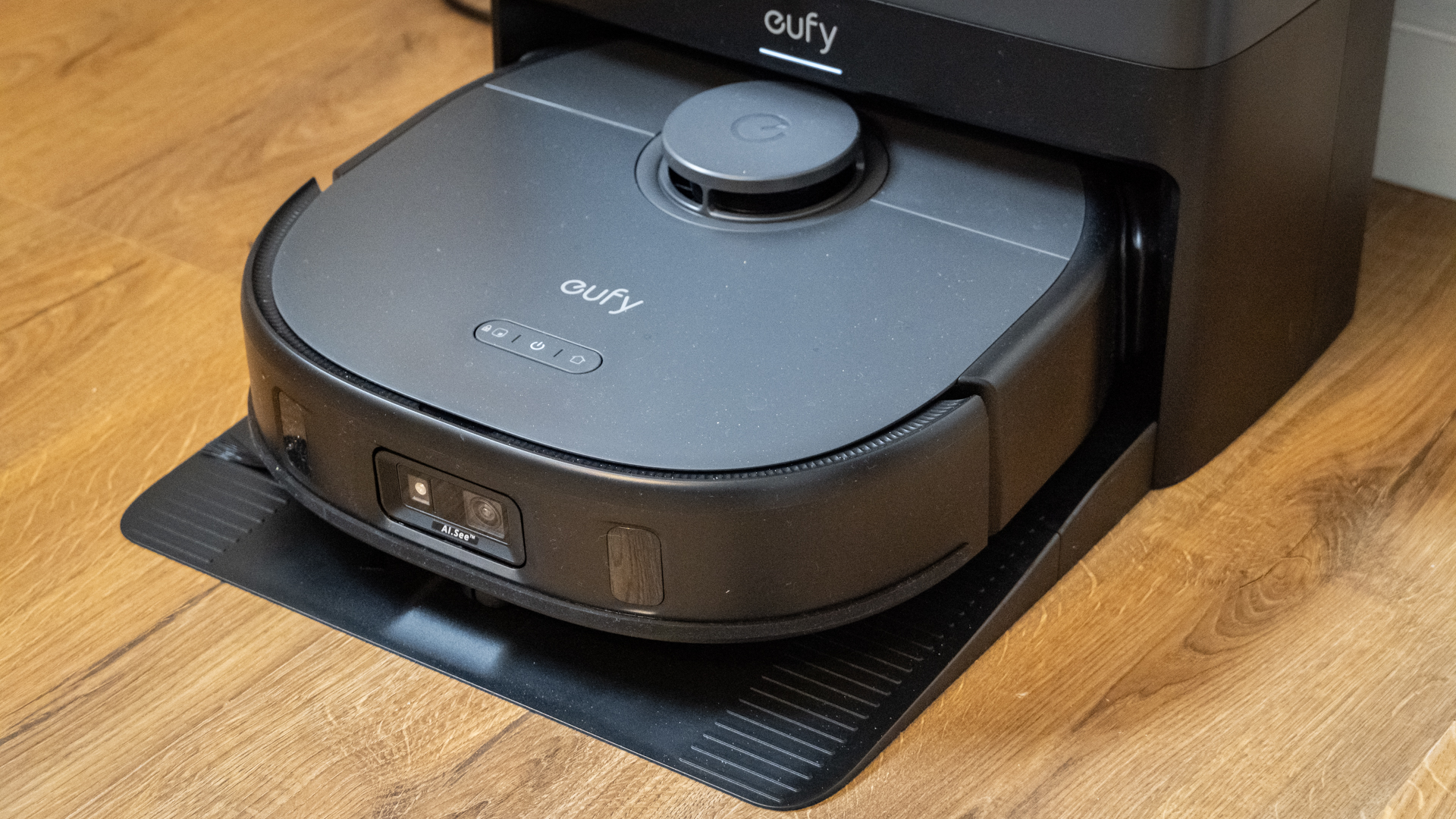

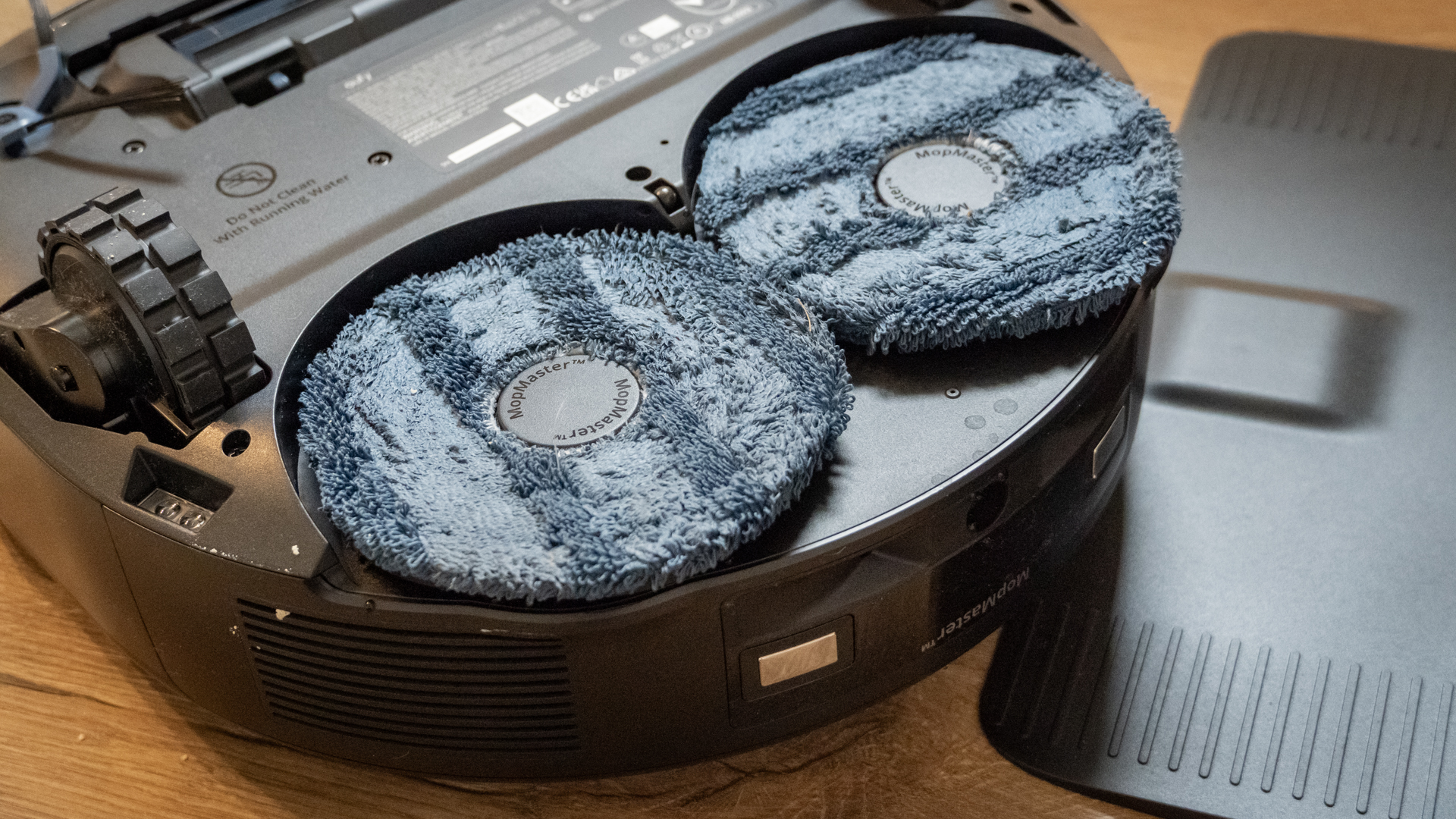
Specifications
Reasons to buy
Reasons to avoid
✅ The Qrevo Curv is a bit too expensive: It's not quite as feature-rich as the Curv (#1), but this bot is still great and with a slightly more affordable price tag.
✅ You want a strong all-rounder: The X10 Pro Omni is a very capable cleaner, offering equally strong vacuuming and mopping functions.
❌ You can stretch to the Qrevo Curv (#1): The Curv is all-round a better robot vacuum, so if you can afford it, it's worth the investment.
❌ You need something cheaper: Want something smaller and more budget-friendly? Check out the Roborock Q7 M5 (#3).
Eufy X10 Pro Omni is another strong all-rounder, and the runner up in my best robot vacuum roundup. This self-empty robot vacuum and mop checks pretty much all our boxes. The suction power is strong, pulling all kinds of debris, fluff and hair and fluff out of our tester's carpet (although it did flick larger debris about rather than sucking it up – a problem with almost all robovacs). It's relatively quiet in all but it's very highest vacuum setting, too.
With some 2-in-1 robovacs, the mopping is a bit of an afterthought, but the Eufy X10 Pro Omni has rotating pads that press down for a more thorough clean on hard floors. On test, it had no trouble at all cleaning a dried-on sugary drink and sticky sauce, automatically choosing the right amount of water for the job. (If you want even more impressive mopping, check out the Eureka J20 at #8, which has a roller mop that supplies continuous fresh water, and siphons off the dirty stuff as it cleans.)
The app is easy to use and functions well. Our reviewer was also very impressed with the mapping – the X10 accurately mapped their apartment on its first exploratory outing – as well as the navigation and obstacle avoidance. However, they did note that the Eufy X10 Pro Omni could occasionally get stuck trying to get over high room thresholds.
The dock station is a little on the larger side, but looks pretty stylish, and houses the water tanks and extra dustbin that allow this robovac to self-empty and (in the case of water) refill, minimizing the need for hands-on time. Overall, a capable cleaner that'll suit most people's needs.
Alternatives
There are no other X10 models in the Eufy range, so you can't choose, for example, a version without mopping or with a more basic dock. There is a more advanced option: the Eufy Omni S1 Pro which adds improved obstacle avoidance, automatic detergent dispensing, and swaps the spinning mop pads for a roller that's fed by a constant supply of fresh water. It's significantly more expensive, though.
Read our full Eufy X10 Pro Omni review
Attribute | Notes | Score |
|---|---|---|
Design | Well made and nicely designed. Robot is on the taller side. | 4/5 |
Performance | Impressive vacuuming and mopping, as well as strong navigation. | 4/5 |
Value | Premium, but far from the most expensive option here, and well priced for what you're getting. | 4/5 |
The best budget robot vacuum
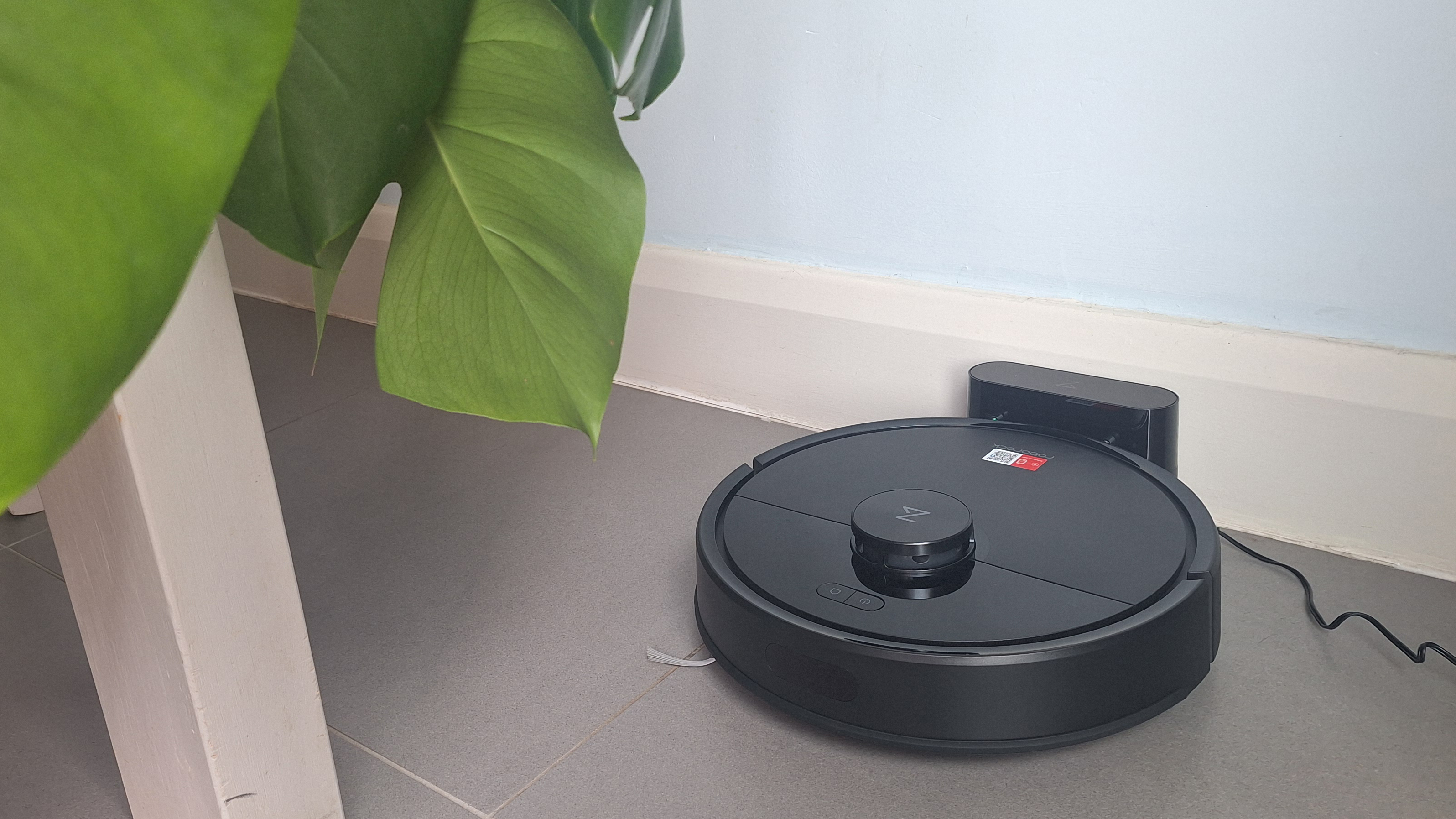
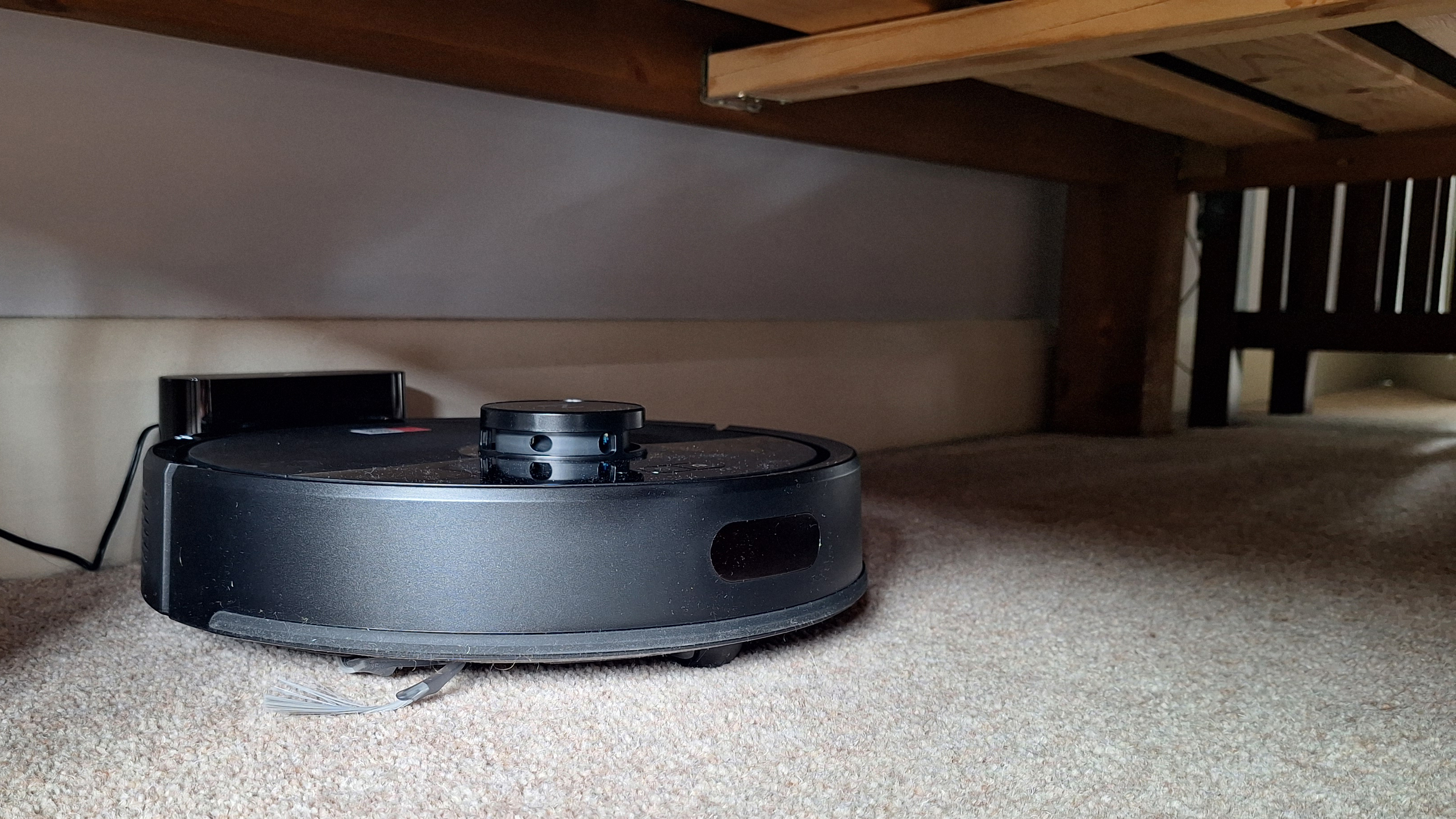
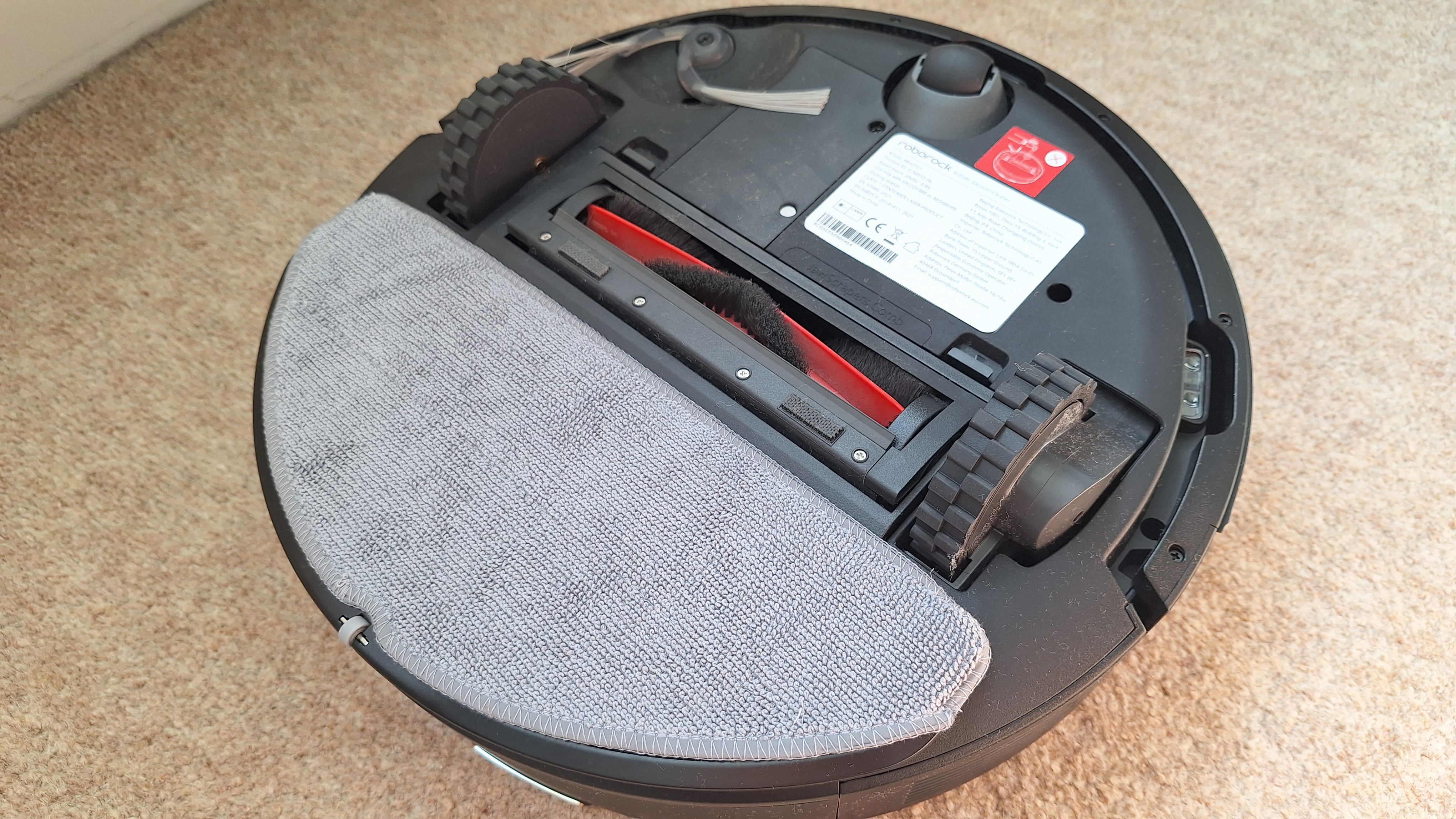
Specifications
Reasons to buy
Reasons to avoid
✅ You're on a budget: This bot comes in at a low price, and offers very strong value for money.
✅ You have a smaller home: The compact, charge-only dock is perfect if you're short on space or aren't dealing with tons of dust.
❌ You have pets: The small onboard bin will fill up quickly if you have pets – luckily, there's an Q7 M5+ version that comes with an auto-empty dock.
❌ Your priority is mopping: The mopping is decent here, but there are alternatives with more capable and low-effort mop setups if that's your priority.
If you don't have tons of cash to splash and are happy with something relatively simple, the Roborock Q7 M5 is the best budget robot vacuum I've tested. For a very affordable price (with further discounts cropping up regularly) it delivers capable cleaning – including the kind of suction specs I'd expect to see on a much pricier bot.
It performed well in my vacuuming tests, sucking up debris large and small, and tackling pet hair with enthusiasm too. Its mapping and navigation are accurate and it meticulously trundled over the entire floor space. However, it wasn't amazing at cleaning right up to the edges of rooms – fancier robovacs have extending side brushes for this, whereas the Q7 M5's is fixed.
The mop setup is very acceptable, if a little on the wet side. I was pleasantly surprised with how effectively it cleared a dried ketchup smear in my tests. You can switch the mopping on and off without having to remove the whole mop pad (as is the case on some budget robovacs), but do note that the Q7 M5 can't lift its mop when traversing carpet.
Overall the build quality felt very robust. I especially liked the generously sized dust cup and water tank, and the big, bouncy wheels that help it tackle uneven flooring and taller room thresholds. I tested the regular Q7 M5, which has a compact, charge-only dock that's ideal if you have a smaller home with no space for a bulky dock.
However, those dealing with higher levels of dust or pet hair should consider the Q7 M5+, which comes with an auto-empty dock, or even the Q7 M5 Max+, which can auto-empty dust and refill the water tank. Naturally, each is a little pricier than the last, but they're all affordable and strong value for money.
Alternatives
There are a few solid options in the budget price bracket. The Dreame D9 Max Gen 2 is similarly priced and offers equally solid performance, although the water tank is smaller and the mop setup slightly more fiddly. Another excellent budget robot vacuum for UK shoppers is the Xiaomi X20+ (#9).
Read our full Roborock Q7 M5 review
Attribute | Notes | Score |
|---|---|---|
Design | Basic but effective. A robust bot with bouncy suspension and large onboard bin and water tank. | 3.5/5 |
Performance | Very strong suction for the price, plus reliable mapping and navigation. Mopping basic but fine. | 4/5 |
Value | Sits in the budget bracket and regularly discounted further. Great value. | 4/5 |
The best robot vacuum for pet hair


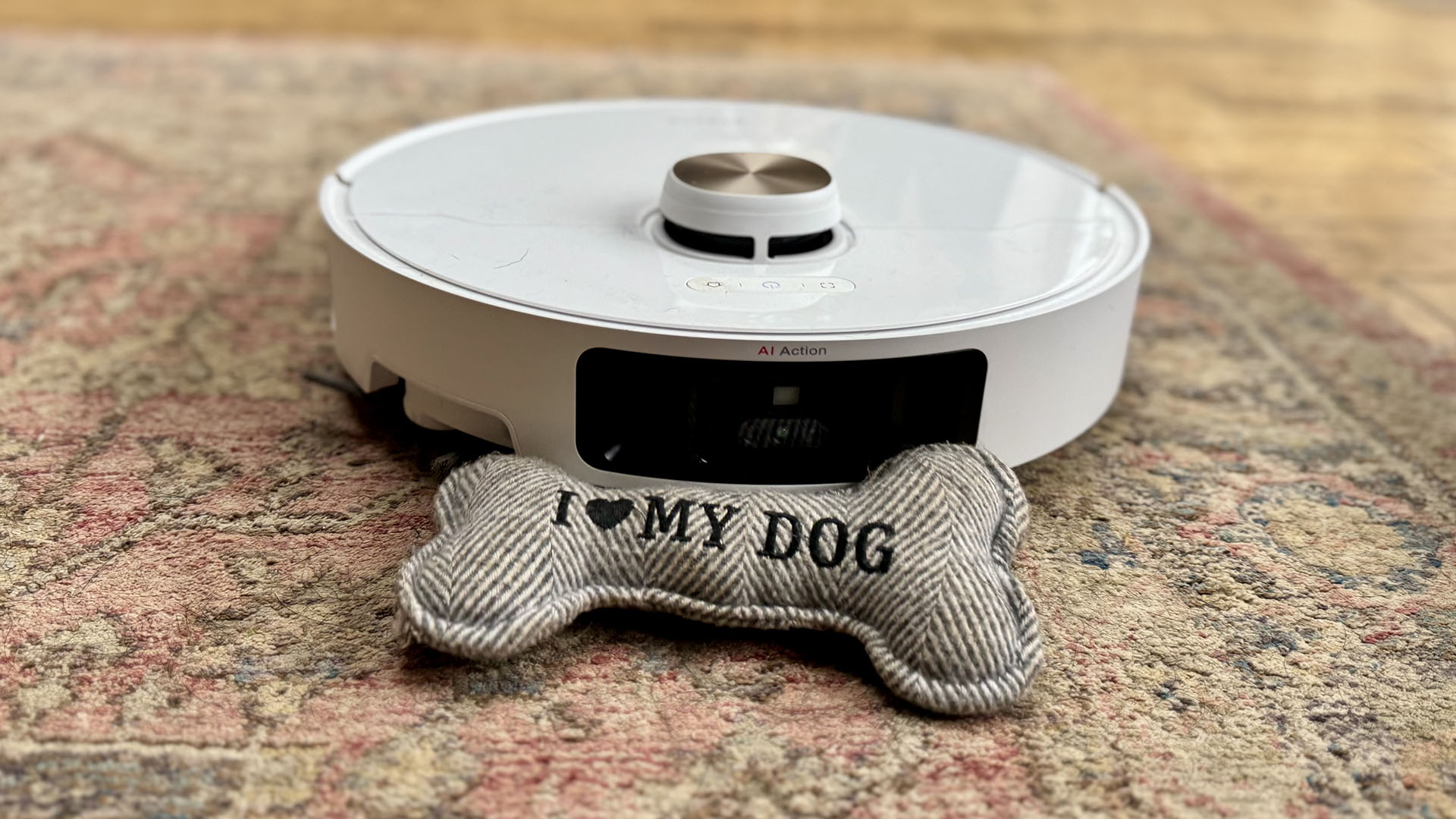
Specifications
Reasons to buy
Reasons to avoid
✅ You have pets: This bot tackled the hair in our reviewer's pet-filled home incredibly well – and better than any other robovac they'd tested.
✅ You have lots of carpet: There's plenty of suction to pull dust from fibers, and this bot will raise or drop off its mop pads so you avoid damp carpets.
❌ You just need something simple: There are simpler options that cost less if you don't need all those features.
❌ You're short on space: The dock is pretty massive, and the styling won't be to everyone's taste.
If you have shedding pets, especially combined with a decent amount of carpet, the Dreame L40 Ultra will be the best robot vacuum for you. This bot was put through its paces in a home filled with furry, four-legged friends, and really rose to the challenge. The impressive suction pulled huge volumes of hair from carpet, and handled hard floors extremely well too. We had no issues with the hair clogging the self-empty mechanism, and a larger-than-usual dock dustbin means you won't need to replace the dust bags too frequently.
The mopping is also a cut above average. On test, we found the rotating pads very effective – great news if you're regularly dealing with muddy pawprints. The robot will leave its mop pads in its dock when they're not needed, or raise them when moving off hard floor to help you avoid damp carpets, too.
The does-it-all dock will take care of emptying the bot's dustbin, refilling its water tank, dispensing cleaning fluid, and cleaning and drying its mop pads, meaning minimal hands-on time from you. Operating this robovac is nice and straightforward too. My tester found the app easy to use, with useful customization options. Mapping is fast and accurate, and object avoidance solid, too.
This isn't a cheap bot, but it regularly attracts hefty discounts now that Dreame has brought out fancier, newer models. If you want to see how it compares to other pet-friendly options, head to our general roundup of the best robot vacuums for pet hair.
Read our full Dreame L40 Ultra review
Attribute | Notes | Score |
|---|---|---|
Design | A well-designed hybrid robovac with features for tackling edges. Dock does is comprehensive, but is bulky. | 4.5/5 |
Performance | Impressive vacuuming and mopping, and outstanding at handling pet hair in particular. | 5/5 |
Value | Premium, but regularly attracts big discounts that deliver excellent value for money. Worth the investment. | 4.5/5 |
The best small robot vacuum

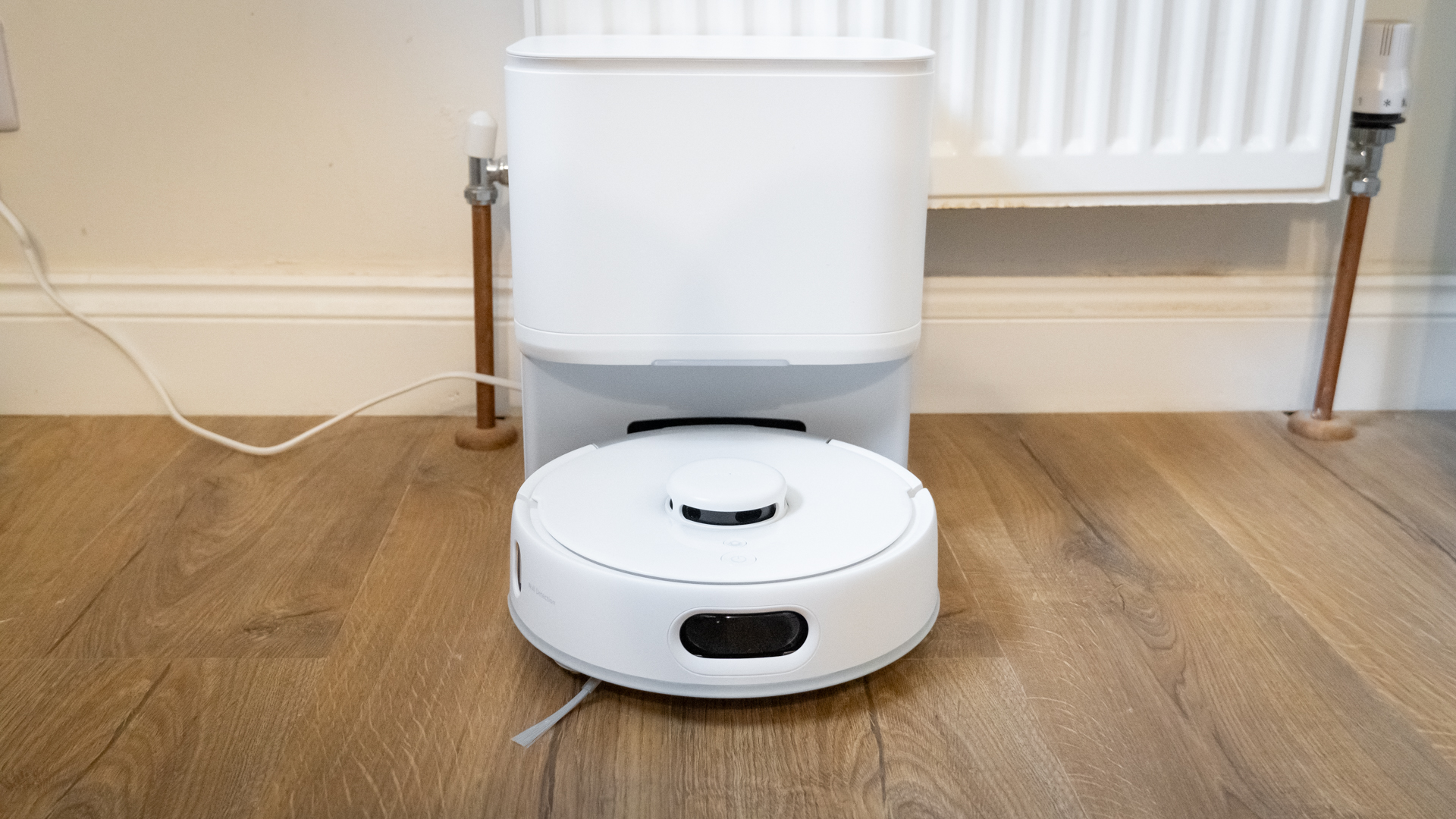
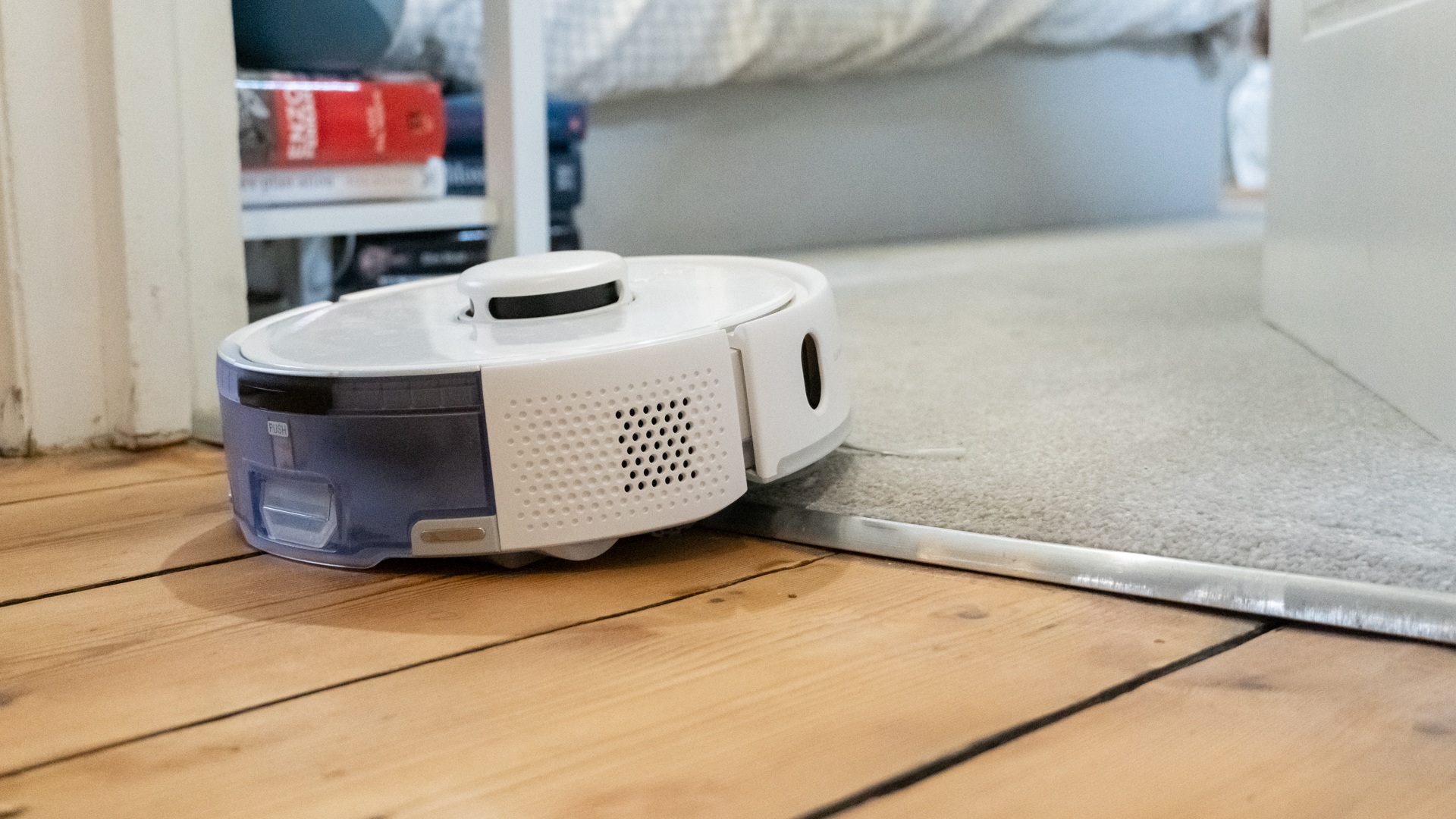
Specifications
Reasons to buy
Reasons to avoid
✅ You don't have much space: The SwitchBot is very tiny, and can get into tight spaces that others can't. The dock is also compact for a self-empty option.
✅ You want a self-empty bot: The dock has a large dust bag, and self-empties – if you don't need that, charge-only docks are much smaller.
❌ You want something that mops well: The mopping here is just dragging a wet wipe across the floor, and not worth bothering with.
❌ You have space for a bigger robovac: You're paying a premium for the size here – there are bigger, better-performing bots in this bracket.
If you're looking specifically for a small robot vacuum, our top pick is the SwitchBot K10+ Pro. The bot itself is very compact, measuring 9.8in / 24.8cm in diameter and 3.6in / 9.2cm in height. That pint-sized design packs in some impressive tech, including intelligent room-mapping and some of the speediest navigation our tester had ever seen. The benefit of the dinky size is that this bot can reach places bigger bots can't, and on test we found it navigated confidently around furniture legs and into tight spaces.
The dock is also very compact for a self-empty model. The interior space is mostly given over to a larger-than-normal dust bag, which means you won't be bothered by the tiny onboard bin. (It's worth highlighting that if you don't need self-emptying, charge-only docks are considerably smaller again.)
There are some downsides, though. The suction power is low for the price bracket – in fact, generally, you're paying a premium for the small size here. The mopping is also so basic as to be not really worth bothering with; the robovac just drags a wet wipe across your floor. On test it also sometimes struggled to clear thresholds of over 2cm.
If your priority is size, though, this is a solid choice. Our reviewer felt it would be a great choice as an 'upstairs' robot vacuum, away from the tougher challenges of kitchens and living rooms.
Alternatives
If you just want something that's shallow in profile for getting beneath furniture, look for a robovac without a raised central puck. This puck is generally used for robot vacuum navigation, but there are options that use different approaches – including all Roomba models, and some of Roborock's newest bots like the Qrevo Slim and Roborock Saros 10R (both of which we rate very highly).
Read our full SwitchBot K10+ Pro review
Attribute | Notes | Score |
|---|---|---|
Design | Fantastically compact and great for getting into tight spot. Self-empty dock also small. | 4.5/5 |
Performance | Navigates confidently into tight spaces, but suction is on the weaker side and mopping is poor. | 3.5/5 |
Value | Not wildly overpriced, but you're paying more for the compact size. | 3.5/5 |
The best premium robot vacuum

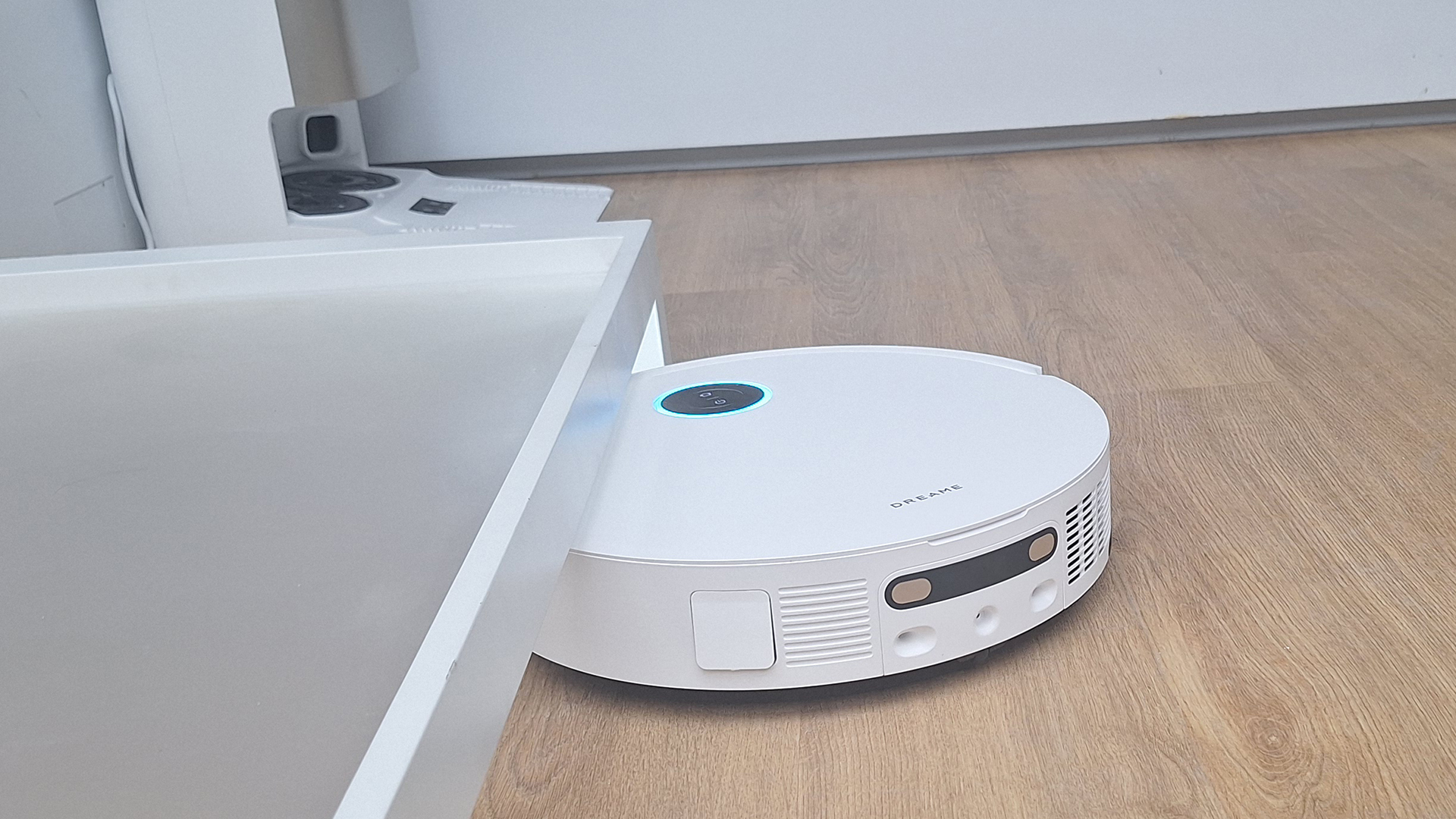

Specifications
Reasons to buy
Reasons to avoid
✅ You're a gadget nerd: This bot is packed with hi-tech features, including little legs and a retractible navigation puck.
✅ You have tall room thresholds: The X50 can hoist itself over thresholds up to 2.4in / 6cm in height.
❌ You're on a budget: This is one of the most expensive robovacs on the market, and it's new enough that discounts are rare.
❌ You don't need the special features: There are plenty of robovacs that are still extremely impressive but lack the fancy features of the X50.
If you're a fan of a hi-tech gadget (or you just want something that's excellent at cleaning and reach places other robots can't) the check out the Dreame X50 Ultra Complete. This bot has a range of cool features, including tiny legs that raise it up to propel it over tall thresholds, and a navigation puck that can retract until it's flush to the robot's top surface. That means it can reach rooms that might have been off-limits to other bots, and clean in low-height spaces like under the sofa.
A handful of other premium robot vacuums offer similar features, but this Dreame bot offers perhaps the most complete package on the market right now, and it's bolstered by excellent cleaning performance too. On test, it offered thorough vacuuming and an superb mopping, and our tester was especially impressed with how well it cleaned the edges of rooms (an extending side brush and mop pad are to thank for this).
The dock is the does-it-all type that does everything from emptying dust to refilling the water tanks, as well as cleaning the mop pads with hot water. There's even UV light treatment to keep everything extra-hygienic.
All that tech comes at a price, and this bot will be out of many people's budgets. It's also relatively new to the market, having gone on sale in spring 2025; that means discounts are rare, but I expect they will start to crop up before too long.
Alternatives
If you're in the mood for some flashy, cutting-edge tech, you'll also want to check out the Roborock Saros Z70. It doesn't have feet, but it does have a robotic arm that'll clear away your socks for you.
Alternatively, if it's the retracting puck tech that's caught your eye, check out the Roborock Saros 10 (#7), which has the same thing. In Dreame's own range, the L40 Ultra (#4) is a very impressive performer, although it lacks the bells and whistles of the X50.
Read our full Dreame X50 Ultra Complete review
Attribute | Notes | Score |
|---|---|---|
Design | A fully-featured hybrid robot vacuum decked out with cutting-edge special features. | 5/5 |
Performance | Excellent cleaning and particularly great at edges. Battery drains a little quickly though. | 4.5/5 |
Value | One of the priciest bots around, somewhat justified by the tech and features. Perhaps wait for a deal, though. | 4/5 |
The best robot vacuum for carpet
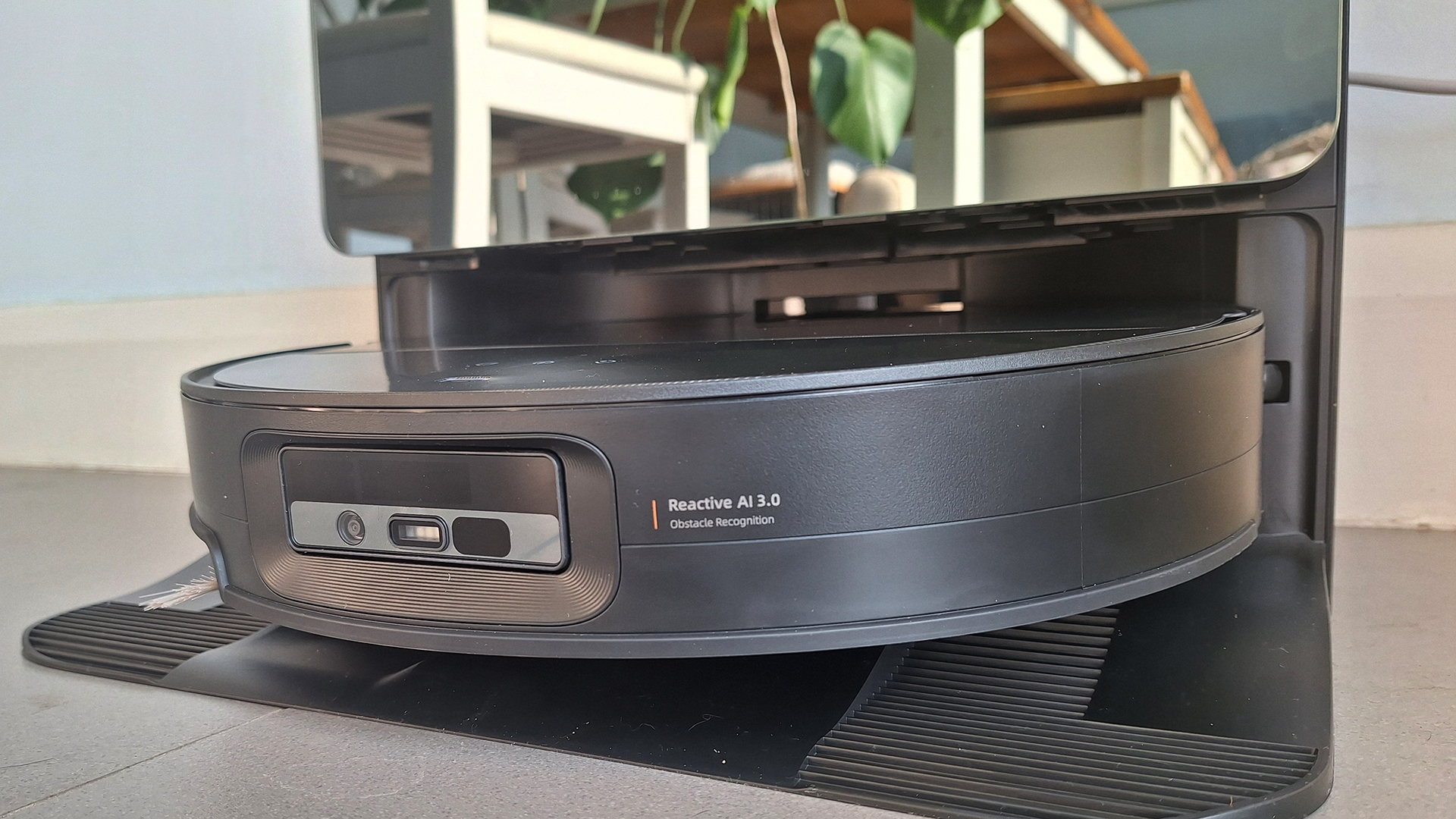
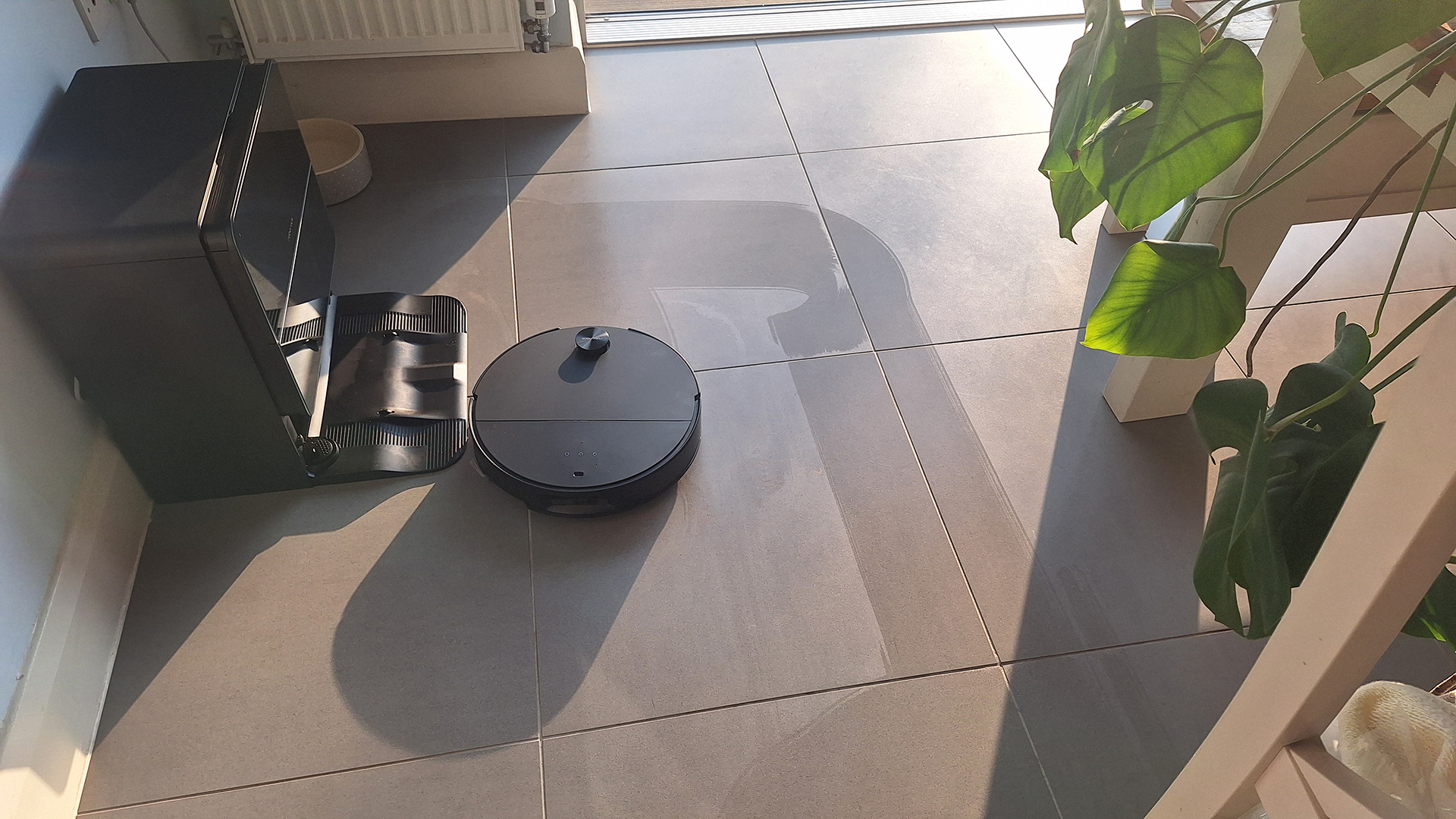
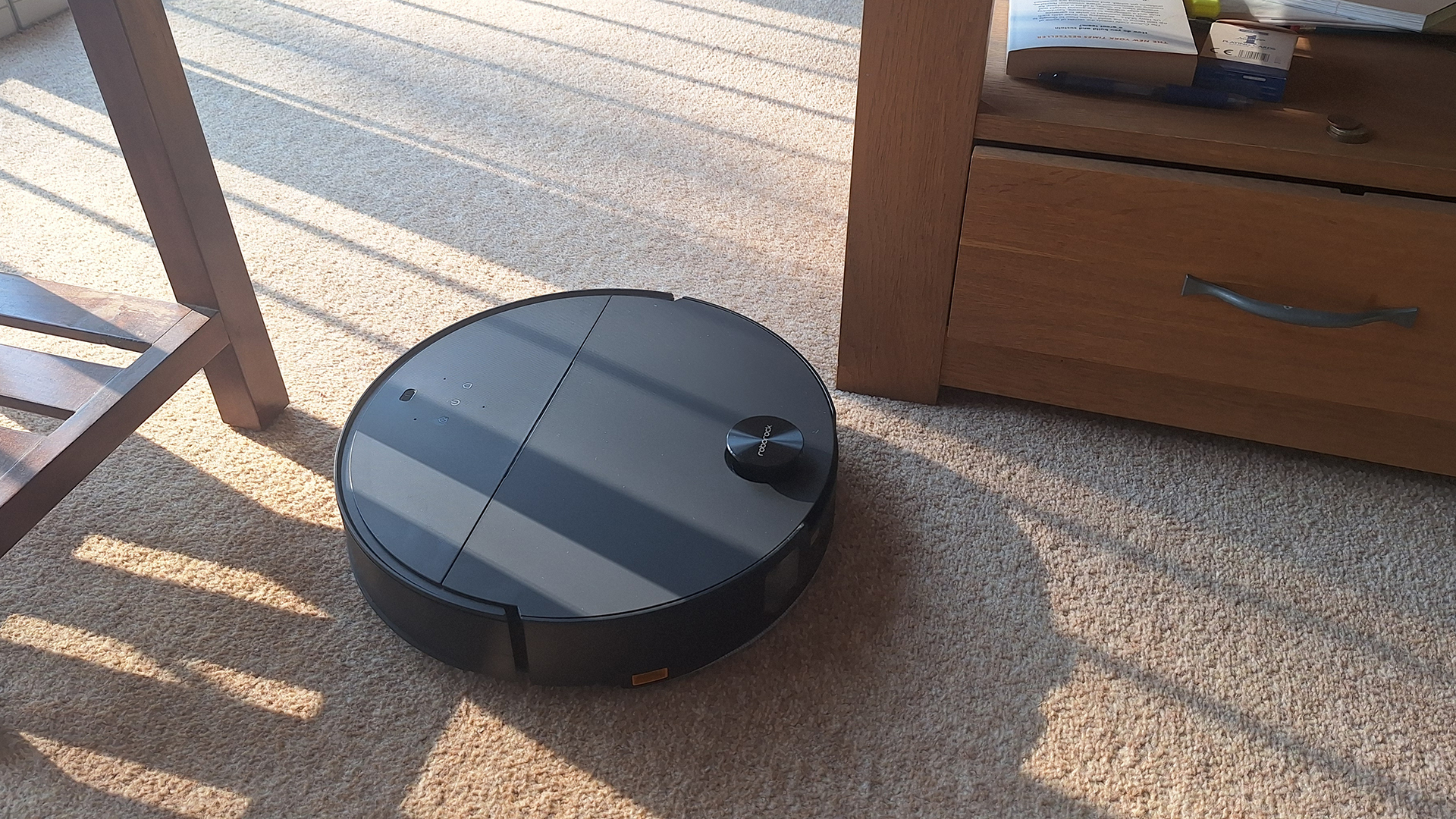
Specifications
Reasons to buy
Reasons to avoid
✅ You have a lot of carpet: This bot has the highest suction of any model here, and it proved excellent at pulling dust from carpet fibers.
✅ You want a stylish dock: Okay, it's not the most important thing, but the Saros 10 has the best looking dock I've seen.
❌ Your priority is mopping: The D-shaped mop here is very good, but the rotating disc style pads tend to offer more of a scrub.
❌ You have especially tall room thresholds: While the Saros 10 can clear step-ups of up to 4cm, but the Dreame X50 (#6) can manage 6cm thanks to its tiny stilts.
The Roborock Saros 10 is the best robot vacuum for cleaning lots of carpet, thanks to incredible suction specs and a well-designed roller to gently agitate the fibers (without getting tangled with hair). It also offers strong mopping, and has the ability to raise or drop off mop pads in the dock when they're not needed, so your carpets won't get damp.
It's one of two robot vacuums in this guide (alongside the Dreame at #6) to have a LiDAR puck that can retract to clean in limited-height spaces. That sounds like a minor thing, but if it's the difference between the bot being able to get into the dusty depths beneath your sofa, and just skirting around its perimeter, it's well worth it. It can also make its way over tall room thresholds, although not quite as tall as the ones the Dreame can.
This bot sailed through my vacuuming tests and also had no trouble pulling large volumes of dog hair from carpeted floors – and then emptying it into the dock without causing a jam. In fact, it's a strong recommendation for pet-owners in general.
Elsewhere the mopping is solid, and an especially good choice if you have floors that are sensitive to moisture but still need an occasional damp clean, because you have fine control over water levels and the lowest settings are really very light. An extra mini side mop helps with cleaning right up to the edges of rooms. However, if you're looking for a deeper scrub, I'd seek out a bot with dual rotating mop pads rather than the fixed, D-shaped one found here.
As well as looking extremely stylish when compared to the wider market, the dock here is comprehensive and will take care of a lot of maintenance tasks for you. It can charge the bot in double-quick time, as well as emptying dust, dispensing detergent, washing the mops with hot water, and drying them with warm air.
Price-wise the Saros 10 is premium, but worth it for the quality, features and performance. As newer Roborocks come out (as they will before long; this brand has a very speedy launch rate), I expect to see strong discounts, too.
Alternatives
This bot has a sister model: the Roborock Saros 10R. It's similar and priced the same, but with a few key differences – mainly that the 10R doesn't have a puck at all (it uses a different navigation tech that means it's unnecessary). See exactly how the two compare in our Roborock Saros 10 vs 10R face-off.
Read our full Roborock Saros 10 review
Attribute | Notes | Score |
|---|---|---|
Design | A feature-filled hybrid robovac with retractible LiDAR puck, extra mini side mop and a comprehensive clean station dock (which is also super stylish). | 4.5/5 |
Performance | Excellent vacuuming, very good mopping and lots of control. Reliable navigation but patchy obstacle avoidance. | 4/5 |
Value | Premium but in line with other brands' range-toppers, and worth it for the quality and features. Might be worth waiting for a discount, though. | 4/5 |
The best robot vacuum for hard floors
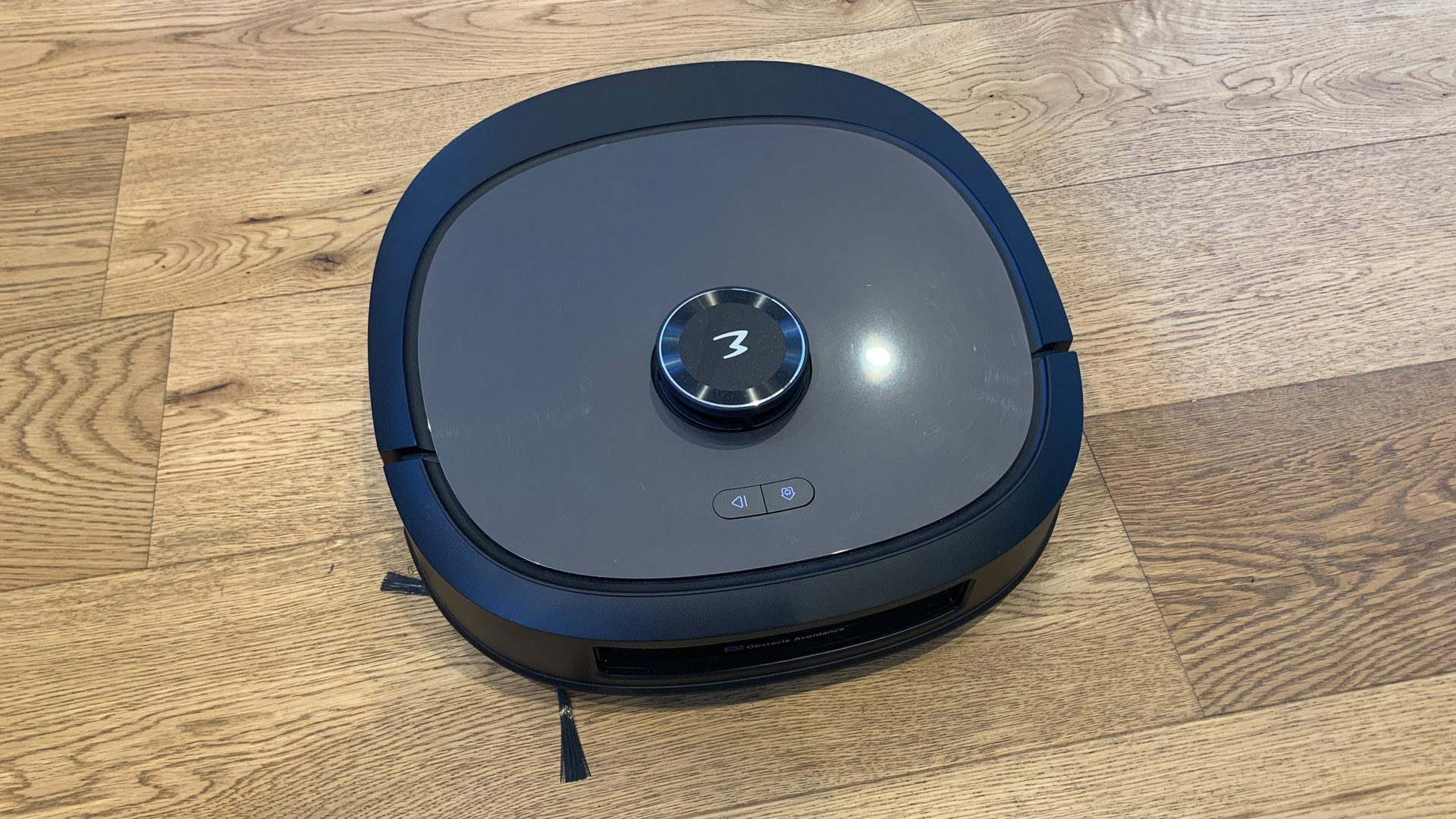
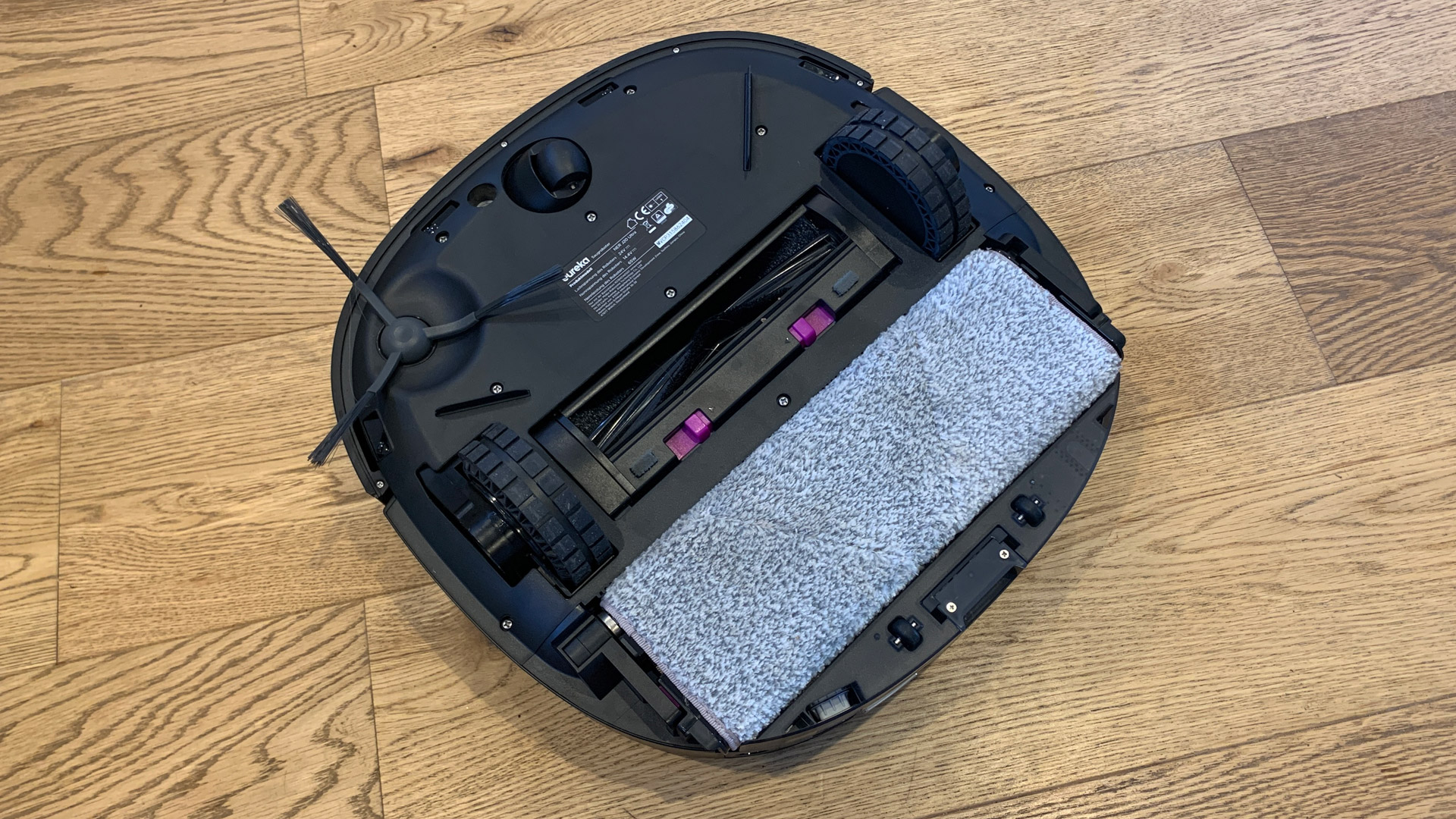
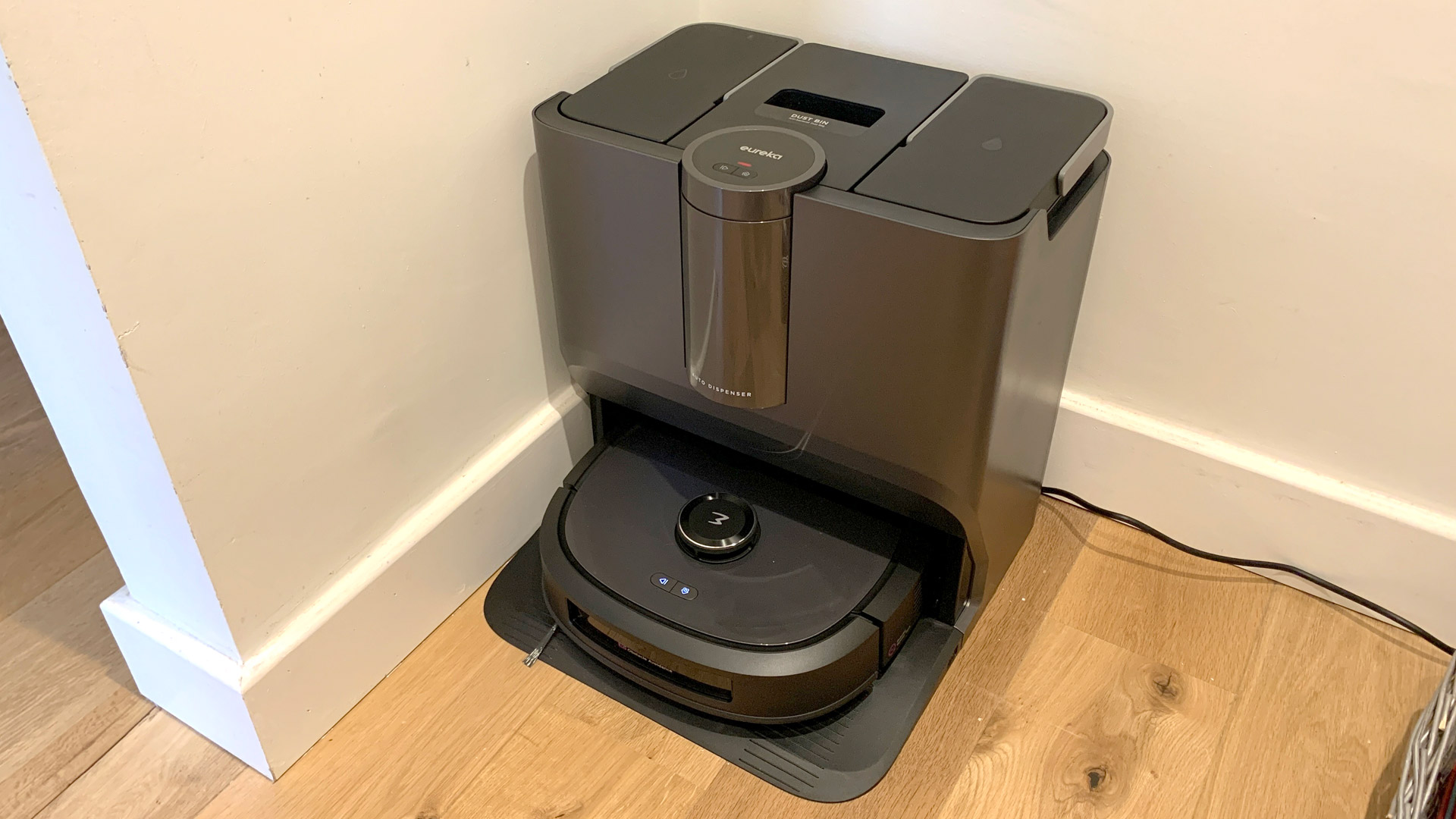
Specifications
Reasons to buy
Reasons to avoid
✅ Your priority is mopping: The star of the show here is the innovative and effective roller mop, which continuously siphons dirty water off the mop pad and adds fresh water as it cleans.
✅ You want a hands-off option: The dock takes care of a lot of mop maintenance, including emptying and refilling tanks, and cleaning the mop pads.
❌ You don't need the very best mopping: The advanced mopping and comprehensive dock bump up the price here, and other robovacs will do a good enough mopping job for most people (the Eufy X10 at #1 has a great mop, for example).
❌ You're short on space: The dock can do a lot of things, but it's pretty bulky as a result.
The Eureka J20 is the best robot vacuum for hard floors, thanks to a game-changing new 'RollRenew' mop style. With most robovacs, mopping is a bit of an afterthought, but that's not the case here. The mop pad is mounted onto a roller (think: tank track), and as it rotates around the dirty liquid is siphoned off and clean water is sprayed on. That helps ensure a hygienic and effective mopping session – the mop won't simply spread messes around further as it tries to clean them.
On test, we found it did a fantastic job of clearing spillages. We were also impressed with the comprehensive docking station, which helps ease the burden of the maintenance tasks involved with mopping robot vacuums. It'll drain the dirty water tank, refill the clean one, and wash and dry the mop pads. Elsewhere, vacuuming is very good, especially on higher suction levels, and the mapping and obstacle avoidance reliable too.
On the down-side, the battery life is rather short on higher powered modes (which will be required for most people's needs). That might not be an issue if you're cleaning on one floor as the bot will just return to its dock to recharge as required, but it becomes more annoying if you're using it on multiple floors.
Price-wise, it's not cheap – although we couldn't fault the build quality or engineering, and these kinds of do-it-all docks do always come at a price. But if you have lots of hard floors and mopping is your priority, it's worth the investment.
Alternatives
Previously in this slot we had the Ecovacs Deebot T20 Omni, which offers hot water mopping that's great at tackling greasy spillages. There are some compromises you'll need to make with this model, but it's often on sale and significantly cheaper than this Eureka model. Another alternative to consider is the Eufy Omni S1 Pro, which we found absolutely excellent for mopping.
Read our full Eureka J20 robot vacuum review
Attribute | Notes | Score |
|---|---|---|
Design | High build quality, innovative mop design, and well-engineered base station that takes care of most maintenance. | 4/5 |
Performance | Excellent mopping, and strong vacuuming too – especially on higher settings. Battery life short though. | 4.5/5 |
Value | Premium, but there are very few alternatives with this roller mop system. Price bumped up by the does-it-all dock. | 4/5 |
The best budget robot vacuum in the UK
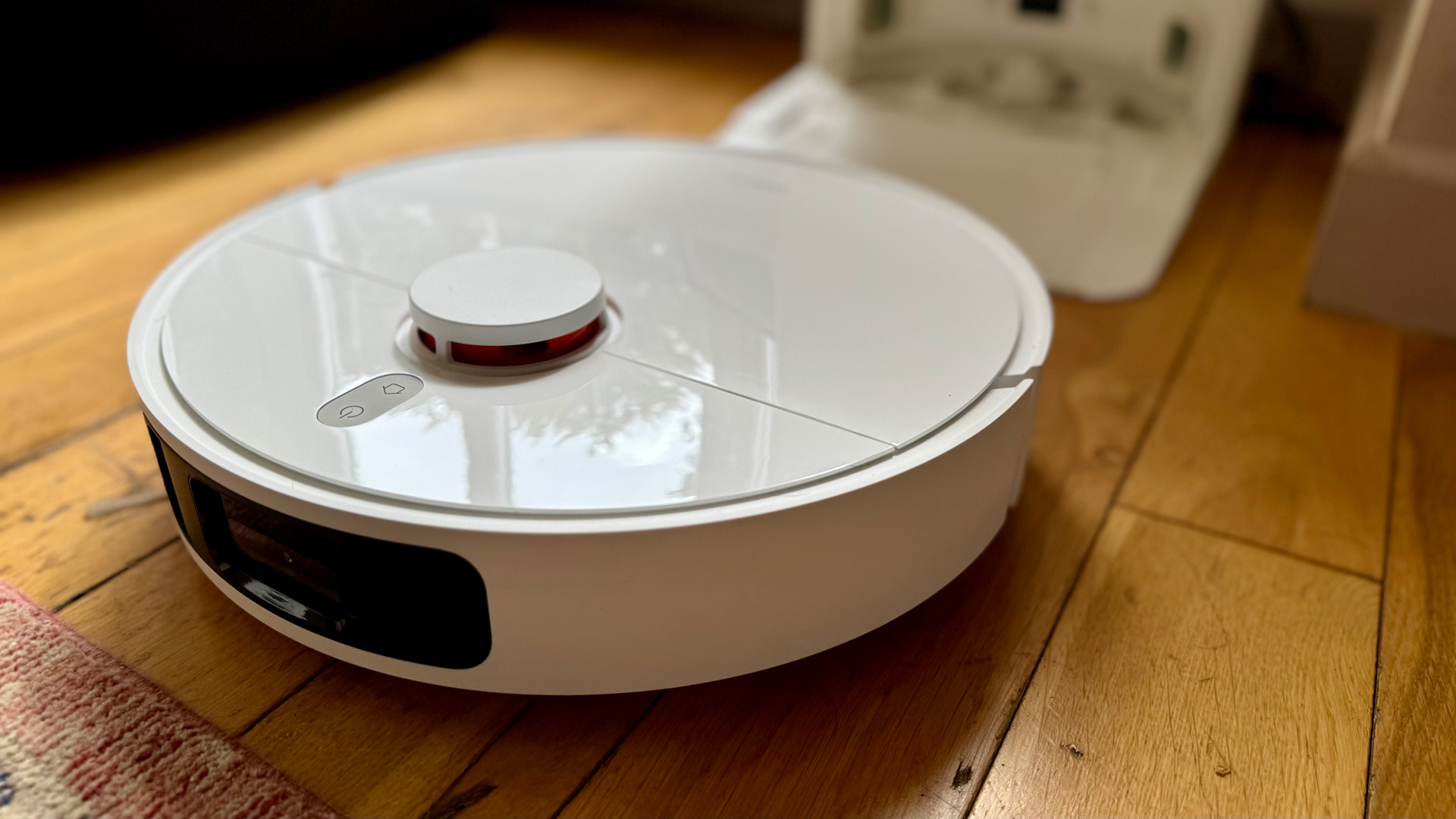
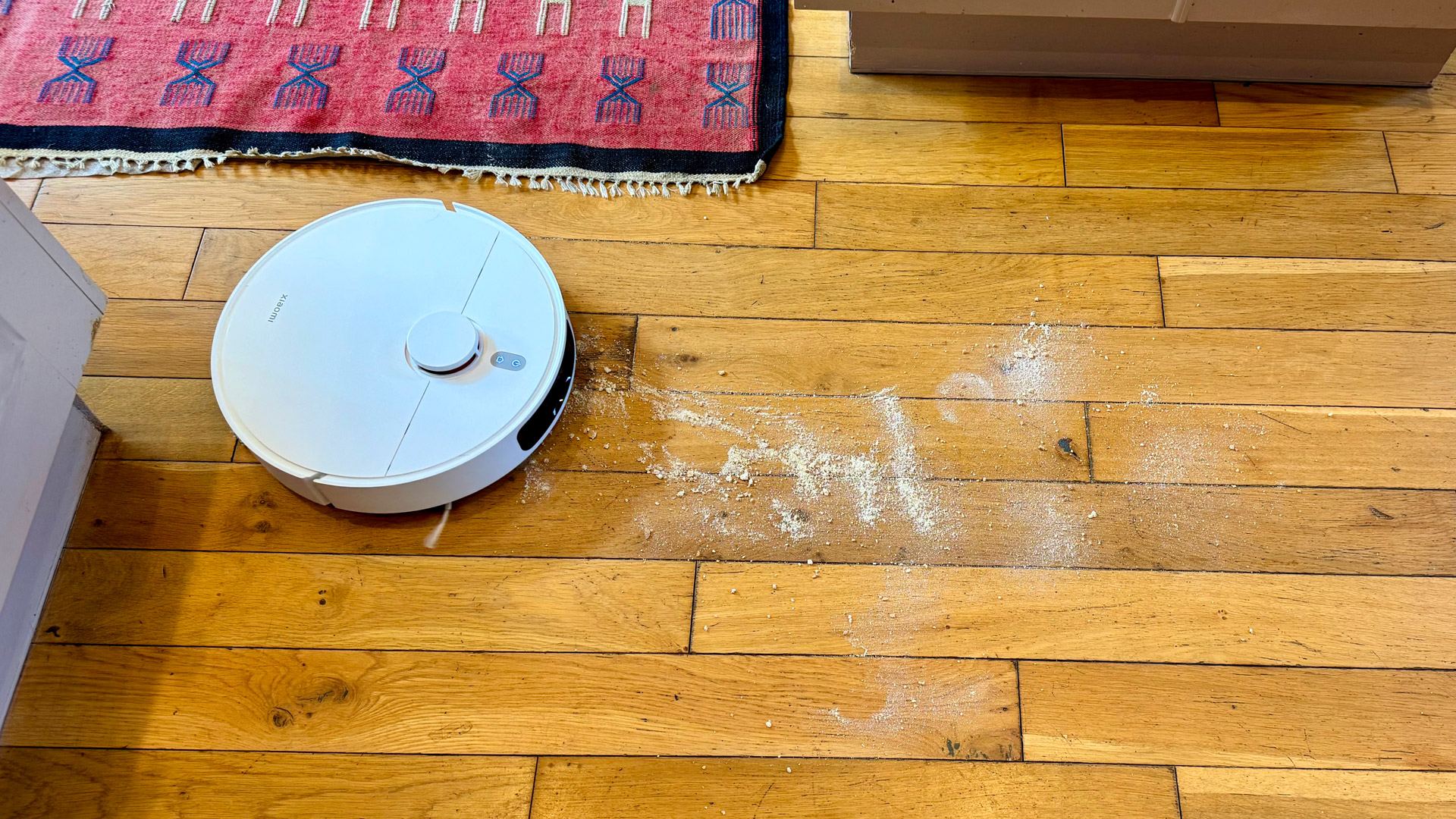
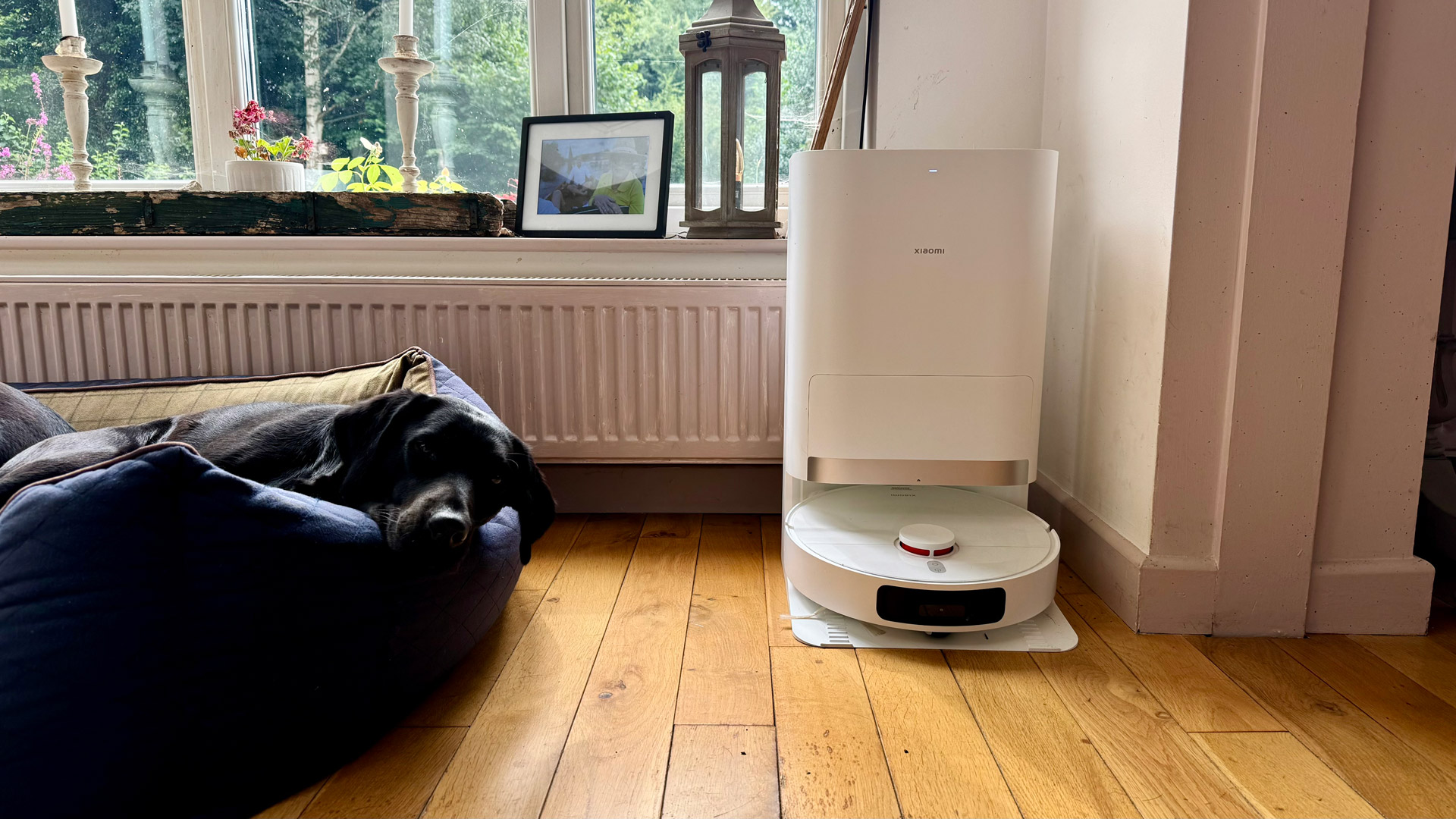
Specifications
Reasons to buy
Reasons to avoid
✅ You're on a budget: The X20+ sits in the budget price bracket, and delivers an awful lot for that very affordable price.
✅ You have hard floor to mop: With dual spinning mop pads and a dock that can clean and dry them, this bot shines when it comes to hard floors.
❌ You're short on space: The dock is large and unattractive, so you'll want somewhere out of the way to store it.
❌ You live in the US: The X20+ can be found in the US, but it's more expensive. Check out the Roborock at #3 instead.
Bargain-hunting shoppers in the UK should seek out the Xiaomi X20+. As well as solid suction specs and excellent cleaning powers, you're getting a whole raft of features that you just never see at this budget price point.
For starters, there are dual spinning mop pads rather than the single, fixed pad that's more common on cheaper robovacs. This style of mop tends to be far more effective at agitating dirt, and we were impressed with this bot's mopping powers in our testing. The pads will also automatically lift when they reach carpet, too (although they fail to identify some of our tester's very thin rugs).
On the mopping front, the dock will take care of a lot of the required maintenance for you; refilling the water tank and washing and drying the mop pads. You'll usually need to shell out a lot more for such a comprehensive clean station... although do note that it's large and not so attractive, so you'll want to make sure you have somewhere out-of-the-way to store it.
Some budget robovacs can fall down when it comes to navigation, but not so the X20+, which found its way around our reviewer's home with ease and confidence.
Alternatives
If you live in the US or don't want a bulky dock, check out the Roborock at #3. This robovac comes with a compact, charge-only dock that can fit – for example – neatly under a bed. The suction levels are higher than the X20's, but you'll need to take care of all maintenance yourself. I also rate the Dreame D9 Max Gen 2 in a similar vein.
Read our full Xiaomi X20+ review
Attribute | Notes | Score |
|---|---|---|
Design | Well-designed bot with dual mop pads, plus comprehensive but bulky and ugly base station. | 4/5 |
Performance | Excellent navigation, very good vacuuming and mopping. | 4.5/5 |
Value | Budget bracket, and offers features more common in premium bots. | 5/5 |
The best all-in-one robot vacuum

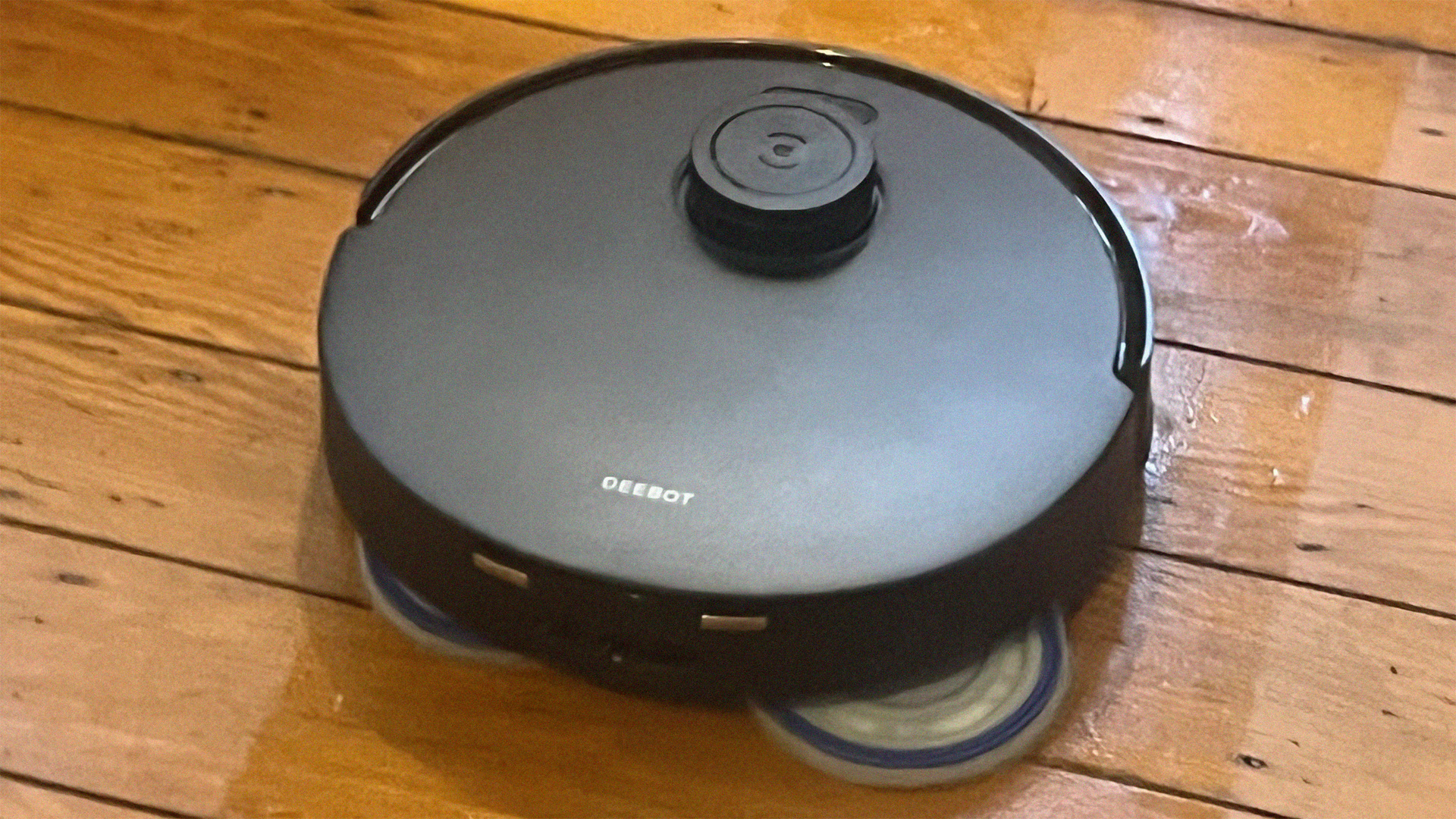
Specifications
Reasons to buy
Reasons to avoid
✅ You also need a manual vacuum: Most people with robovacs also have a manual vacuum. The Ecovacs takes the fuss of that out by providing you with one in the first place.
✅ You love a high-tech gadget: With its own voice assistant, fantastic mapping and (albeit unreliable) foot control, this is one clever robot vacuum.
❌ Your priority is mopping: The mopping here is very good, but probably not as good as the Eufy at #1 or Eureka at #7.
❌ You're on a budget: The Deebot T30S Combo is one of the more expensive robot vacuums in my guide, and if you're willing to make a few compromises on performance or features then there are plenty more affordable alternatives.
The Ecovacs Deebot T30S Combo is the best all-in-one robot vacuum solution. It has the highest maximum suction of any robot vacuum in this ranking (11,000Pa – matching the maximum we see on any robot vacuum). The specs stood up on testing too; this robovac's vacuuming powers are some of the very best we've come across. Our tester also found it could tackle the edges of rooms remarkably well, and its mopping is excellent too.
Most people with robot vacuums need to supplement them with a manual vacuum – even if your robovac is great at corners and edges, it still won't be able to tackle stairs or upholstery. Ecovacs has taken the effort out of that by bundling a mini handheld vacuum in with the T30S Combo (and if you get the Complete version, there's a full stick vacuum thrown in!) for supplementary cleaning. At 3L, the onboard dustbin capacity is larger than usual, meaning it you'll need to replace the bags less often.
As you'd expect at this price, this robot vacuum not short on features, including its own voice assistant. It can launched via the tap of a foot (although on test this didn't always work reliably), the base station will wash and dry the mop pads, the dust cups of the robovac and the handheld vac will auto-empty when docked, and the mapping is outstanding. The companion app works extremely well – our tester was especially impressed that it automatically partitioned the rooms into their own spaces. In terms of performance, we had almost no issues with this robot vacuum at all – if it's in your budget, it's worth the investment.
Read our full Ecovacs Deebot T30S Combo review
Attribute | Notes | Score |
|---|---|---|
Design | Comes with a supplementary handheld vacuum. Base is a bit wide, but houses both parts, plus accessories. | 5/5 |
Performance | Great at vacuuming, and good at mopping although can sometimes spread wet spillages. Long battery life and fast charging. | 4.5/5 |
App | Easy to use with plenty of fine-tuning options. Solid mapping and partitioning, too. | 5/5 |
Value | Very premium pricing. Party justified by quality, but will be too much for many. | 4/5 |
Specs comparison
Model | Max suction | Robot height | Dock size | Mop type | Self-empty | Dock bin capacity | Max threshold clearance |
|---|---|---|---|---|---|---|---|
1. Roborock Qrevo Curv | 18,500Pa | 4in / 10.3cm | 17.7 x 17.7 x 17.7in / 45 x 45 x 45cm | Dual spinning discs | Yes | 2.7L | 1.6in / 4cm |
2. Eufy X10 Pro Omni | 8,000Pa | 4.5in / 11.4cm | 18.9 x 14.4 x 18.1in / 46 x 36.6 x 48cm | Dual spinning discs | Yes | 2.5L | Not stated |
3. Roborock Q7 M5 | 10,000Pa | 3.9in / 9.9cm | 6.3 x 4 x 2.8in / 16 x 7 x 10.1cm | D-shaped | No | None | Not stated |
4. Dreame L40 Ultra | 11,000Pa | 4.1in / 10.4cm | 18 x 13.4 x 23.3in / 45.7 x 34 x 59.1cm | Dual spinning discs | Yes | 3.2L | 0.9in / 2.2cm |
5. SwitchBot K10+ Pro | 3,000Pa | 3.6in / 9.2cm | 12.72 x 10.28 x 8.27in / 32.3 x 26.1 x 21cm | Wet-wipe | Yes | 4L | Not stated |
6. Dreame X50 Ultra Complete | 20,000Pa | 3.5in / 8.9cm (puck retracted) | 13.4 x 10.2 x 23.2in / 34 x 26 x 59cm | Dual spinning discs | Yes | 3.2L | 2.4in / 6cm |
7. Roborock Saros 10 | 22,000Pa | 3.1in / 8cm (puck retracted) | 17.3 x 18.5 x 16in / 47 x 41 x 44cm | D-shaped | Yes | 2.5L | 1.6in / 4cm |
8. Eureka J20 | 8,000Pa | 4.1in / 10.5cm | 17.8 x 16.5 x 18.1in / 45.2 x 41.9 x 46cm | Roller | Yes | 3L | 0.9in / 2.2cm |
9. Xiaomi X20+ | 6,000Pa | 3.8in / 9.7cm | 23.1 x 16.8 x 13.4" / 58.6 x 42.7 x 34cm | Dual spinning discs | Yes | 2.5L | Not stated |
10. Ecovacs Deebot T30S Combo | 11,000Pa | 4.1in / 10.4cm | 20.8 x 21.8 x 17.4" / 52.8 x 55.4 x 44.3cm | Dual spinning discs | Yes | 3L | Not stated |
Tested by
All the robot vacuums in this ranking have been rigorously tested, either by one of the TechRadar Homes team or an experienced reviewer. Meet some of the expert reviewers who tested the robovacs that feature in this guide.

James has tested robot vacuums of all sorts from the most basic models to the ones so feature-packed that they can be used as a security camera. He appreciates models that can suck up all sorts of debris, clean the edges of rooms, and allow easy room partitioning in-app. So far he has reviewed 9 robot vacuums for TechRadar, including models by Narwal, Ecovacs, Yeedi, Bissell and Shark.

Alistair is a London-based journalist who has been writing about tech for over a decade. He has tested numerous robovacs over the years for TechRadar, from brands like iRobot, Eufy and Roborock. His favourites match intelligent navigation with smart design.
Alternatives to consider
If none of the robot vacuums above take your fancy, here are some other models worth considering. These robovacs all scored highly on test, but just didn't quite make our main guide.
Ecovacs Deebot T20 Omni
This bot was previously our top pick for hard floors, thanks to hot water mopping that's more than a match for greasy spillages. It does create a lot of dirty water though, and is a little slow because it'll wash its mop pads multiple times per cleaning session. Elsewhere, it boasts an excellent app and the vacuuming is strong, too.
Read the full Ecovacs Deebot T20 review
Roborock S8 Max V Ultra
The S8 Max Ultra is a very solid all-rounder, and only lost its place in our ranking because Roborock came out with some even better models very shortly afterwards. On test, it proved itself remarkably hands-off, mapping and navigating with no fuss. And of course, the vacuuming and mopping are both effective, too.
Read the full Roborock S8 Max V Ultra review
Yeedi C12 Pro Plus
This mid-tier robovac offers good vacuuming and mopping, the mapping is strong, and it copes well with pet hair. It's less good at getting up to the edges of rooms and the object avoidance can be unreliable, though.
Read the full Yeedi C12 Pro Plus review
Eureka J20
The standout feature on the J20 is an innovative mop pad, set on a roller like the wheels of a tank, which works extremely well. It's very much a premium option, but the performance is excellent.
Read the full Eureka J20 review
Samsung Bespoke Jet Bot Combo AI
On test, we were very impressed with this robovac's onboard intelligence, customization options, and smart home features (it's natively SmartThings compatible, which is good news for those in the Samsung ecosystem). However, the software was still buggy at time of review, and we'd also expect higher suction for the premium price.
Read the full Samsung Bespoke Jet Bot Combo AI review
Eufy Omni S1 Pro
On test, we were wowed by this robovac's mopping abilities. The mop pads assert downwards pressure as they rotate, leaving our tester's floors shining and spotless. In contrast, the vacuuming was good but not outstanding.
Read the full Eufy Omni S1 Pro review
Frequently asked questions
Are robot vacuums worth it?
For certain people and households, very much so. I only used manual vacuums before I started testing robot vacuums for TechRadar, and now I wouldn't be without a robovac. They have revolutionized my cleaning – I live alone, so I'm not dealing with loads of dirt and dust buildup, but I send the robot out once or twice a week and it just takes care of the vacuuming for me. It's realistically far more often than I would drag a manual vac out of the cupboard, so my apartment is cleaner than usual.
I have also kitted my partner's larger house out with a hybrid robot vacuum and it has proved a massive win there too. The bot gets sent out almost nightly to clear dog hair from carpets and remove paw-prints from the kitchen floor. It's not up to a deep clean, but it stops the hair from building up and keeps things looking neat between manual vacuum sessions.
A 2024 study from Roskilde University in Denmark explored how householders’ experiences with robot vacuum cleaners compared to their experience with manual vacuum, and found that "robotic vacuum cleaners are inferior in use, yet transform vacuuming". That's exactly in line with my personal experience – while I can see that my robot vacuum's cleaning power is not as strong as a manual vac, the fact that it allows for regular, basically effort-free vacuuming means it has still had a massive positive impact on my cleaning routine.
Robot vacuums can be expensive, but you don't have to shell out for a top-of-the-range model – for many people, even a basic, affordable option will make a big difference. There's a cheap Dreame D9 Gen 2 that lives under a bed at my parents' house and takes care of vacuuming upkeep in the bedrooms. It's not fancy or advanced, but it's compact and saves my parents from dragging the manual vac around quite so often, in rooms that don't get a ton of traffic.
There are caveats, though. Robovacs can't deal with stairs (although watch this space, that might be changing), so their usefulness in multi-floor homes is far more limited. They're also not capable of proper deep cleans, so will typically supplement rather than replacing a manual vacuum.
How much does a robot vacuum cost?
Pricing for robot vacuums can vary enormously. At TechRadar, these are the price bands we use:
Budget: less than $500 / £400
Mid-range: $400-$800 / £400-£650
Premium: $800+ / £650+
Broadly speaking, the more functions are included, the higher the price tag. Basic models just vacuum, the level up will have a mop and perhaps a self-empty dock. Adding things like automatic water refilling and mop pad cleaning will result in a much higher price tag. So if you just want a capable robot vacuum and are happy to take care of some of the maintenance tasks yourself, you'll be able to shop mostly in the budget and lower mid-range brackets.
It's not rare these days to see range-topping models run to four figures, but the rate of meaningful improvement has started to slow, and for many people, the features included in those models are far from essential. Big-brand robovacs that are a couple of years old can often deliver the best value for money, with very few sacrifices in performance. And sales events like the Black Friday deals generally come through with strong discounts in this category too.
Do robot vacuums work on pet hair?
Yes, but with caveats. Robot vacuums can't match manual models for outright suction power, so they won't clean built-up pet hair and dander as thoroughly as, say, a corded upright. That's especially true if you're dealing with carpet. Robot vacs are best suited to convenient, little-and-often cleans, so if you send yours out daily, it'll help you stay on top of your pet's hair and stop it from building up in the first place. You'll likely still want to supplement this with the occasional deep clean with a manual vacuum, though.
If you have shedding pets and carpet, look for models with higher suction power (6,000Pa or ideally more), and a boost/extra suction mode option. Models with rubbery brushrolls are also typically good at gripping hair.
Can a robot vacuum replace a normal vacuum?
Realistically, probably not. For one, you can't use them anywhere but on the floor, so you'll need something to clean your stairs, furniture, mattress and so on. They also can't really match manual vacuums for suction power, so while they can help you stay on top of dust build-up, most people will want to supplement their work with the occasional deep clean with a manual vacuum.
Read more on this subject in our article exploring can a robot vacuum replace your existing vacuum cleaner?
How do robot vacuums work?
In the most basic terms, robot vacuums are compact machines that make their way around your home and vacuum up dust and dirt. Most modern robot vacuums can also mop floors for you. They're paired with a dock where they return to charge. These docks can sometimes also take care of maintenance tasks for you, including emptying the small onboard dust bin. Navigation typically relies on lasers (LiDAR) supplemented by cameras.
The features included in today's best robot vacuums are wide and varied. On the vacuuming front, it's common to see a side sweeper that rotates to flick dust and dirt from the edges of rooms to the bot's suction path. On more advanced robot vacuums, you might have two, and they might be able to extend out when the bot senses it's near the edge of a room. Many modern bots also have anti-tangle features built into their rollers, to prevent hair wrap.
Mop types also vary. Common setups include a D-shaped pad (which sometimes vibrates or presses down) or two spinning discs, but roller mops are also starting to become popular. They're dragged across the floor to wipe it down and – to some extent – scrub away dirt. Pricier bots will be able to lift their damp mop pads when they sense they're moving onto carpet, and if you opt for an advanced dock it might be able to refill your onboard water tank, clean and dry the mop pads, and dispense floor cleaners too.
What is the best robot vacuum?
After reviewing nearly 100 different options in total, the best robot vacuum on the market right now is the Roborock Qrevo Curv (#1). It used to be that this bot was my premium pick, but widely available price-drops have pushed it up into the overall top spot.
Roborock is a reliably excellent robot vacuum brand, and the Curv boasts some seriously impressive specs (but lacks the kind of unnecessary extras that might push the price up). It delivers superb suction and excellent mopping, is dreamily straightforward and reliable in use, and comes with a dock will take care of plenty of maintenance task for you.
How to choose the best robot vacuum for you
New robot vacuums are being released at an alarming rate, and it can be difficult to tell one from another. Below is my quick guide to how to choose the right model for you – if you want more information, you'll find it in my in-depth robot vacuum buying advice article.
Suction power
Up to the start of 2025, the highest suction level you'd see on a robot vacuum would be around 10,000Pa (which will be ample for most people's need). However, today's top-specced bots can generate upwards of 18,000Pa. In the mid-range price bracket today, expect 6,000-9,000Pa of suction. Lower than 6,000Pa is what I'd expect in a budget-friendly model.
Respected robovac brand Eufy says on its blog that 2,000-6,000Pa is "adequate for routine maintenance cleaning". That figure is a little outdated, and you can expect more suction for your money nowadays. If you're dealing with things like pet hair and/or carpets, I'd definitely be looking at a bot that has 6,000Pa plus.
Remember that in general robot vacuums are designed for regular, light cleaning rather than deep cleans.
Vac or mop-vac?
Many of today's best robot vacuums are also able to mop floors. This can be useful if you have a mix of hard floors and carpet, but be aware that robovac mopping tends not to clean as well as good old manual mopping. Dual, rotating circular disc mop pads tend to deliver a more effective clean than semicircular mop pads, in my experience, and the new breed of roller mop is a step up again.
▼
Dock type
The cheapest robovacs will only have a dock for charging. Pricier models incorporate self-emptying of the onboard dustbin, and draining/refilling of the onboard water tanks. The very fanciest models offer automatic mop pad cleaning, and detergent dispensing for the mopping fluid. Onboard dustbins tend to be small, so if you're dealing with lots of dust or hair then I'd recommend prioritizing a self-empty dock. However, be aware that the more functions you add, the bigger the dock will be – the ones with water tanks can be pretty massive.
Cleaning features
Beyond suction power, there are lots of design aspects that will affect how well your robovac cleans, including edge cleaning features, pet-friendly features, and features geared towards tackling hair.
Historically, robovacs aren't great at cleaning up to the edges of rooms, but today's best robot vacuums add spinning side brushes designed to flick debris into the robot's suction path. Combo models might also have mops that can kick out from the side of the vacuum to get closer to the sides of rooms.
Pet owners might want to look for a model that is able to recognize their pet and either avoid it (if it's spooked by the addition of a sentient appliance to the household) or seek it out to check up on it while you're out of the house. If your pet isn't reliably house trained, beware: even bots with advanced object recognition can struggle with objects under, say, 2 inches in height. I'd never trust any robovac to avoid pet poop, even those with promises that specifically focus on pet mess.
If you have long hair, or live with someone who does, you might want to consider a robot vacuum with features geared towards ensuring it doesn't end up tangled all around the brushrolls. Some brands will address this by tapering their brushrolls or breaking them in the middle, with the aim of quickly directing hair towards the bin inlet. Dreame even has an alternative brushroll attachment that has little blades to chop up hair so it can be more easily managed.
How we tested these robot vacuums
✅ We've tested over 94 robot vacuums in total
✅ We've been reviewing robovacs since 2015
A new robot vacuum can be a significant investment, so to ensure you end up with the right one for you, each model here has been tested either by myself or one of my regular, experienced freelance reviewers.
We test out models from a wide range of brands, including the likes of iRobot Roomba, Dreame, Shark and Roborock, as well as Eufy, Ecovacs, Narwal and Proscenic. We cover options for different budgets, rather than only testing the latest-and-greatest models (which, after all, will be overkill for many shoppers).
Our reviews are underpinned by specific, standardized tests. Here's a rundown of our review process.
Suction tests
We test fine dirt pickup by sprinkling a mix of flour and cookie crumbs on the floor, and large debris pickup using oats. We look at whether there's any remnants left after a single pass from the robot vacuum, and if it catches them on a second run. We repeat these tests for both hard floor and carpet.
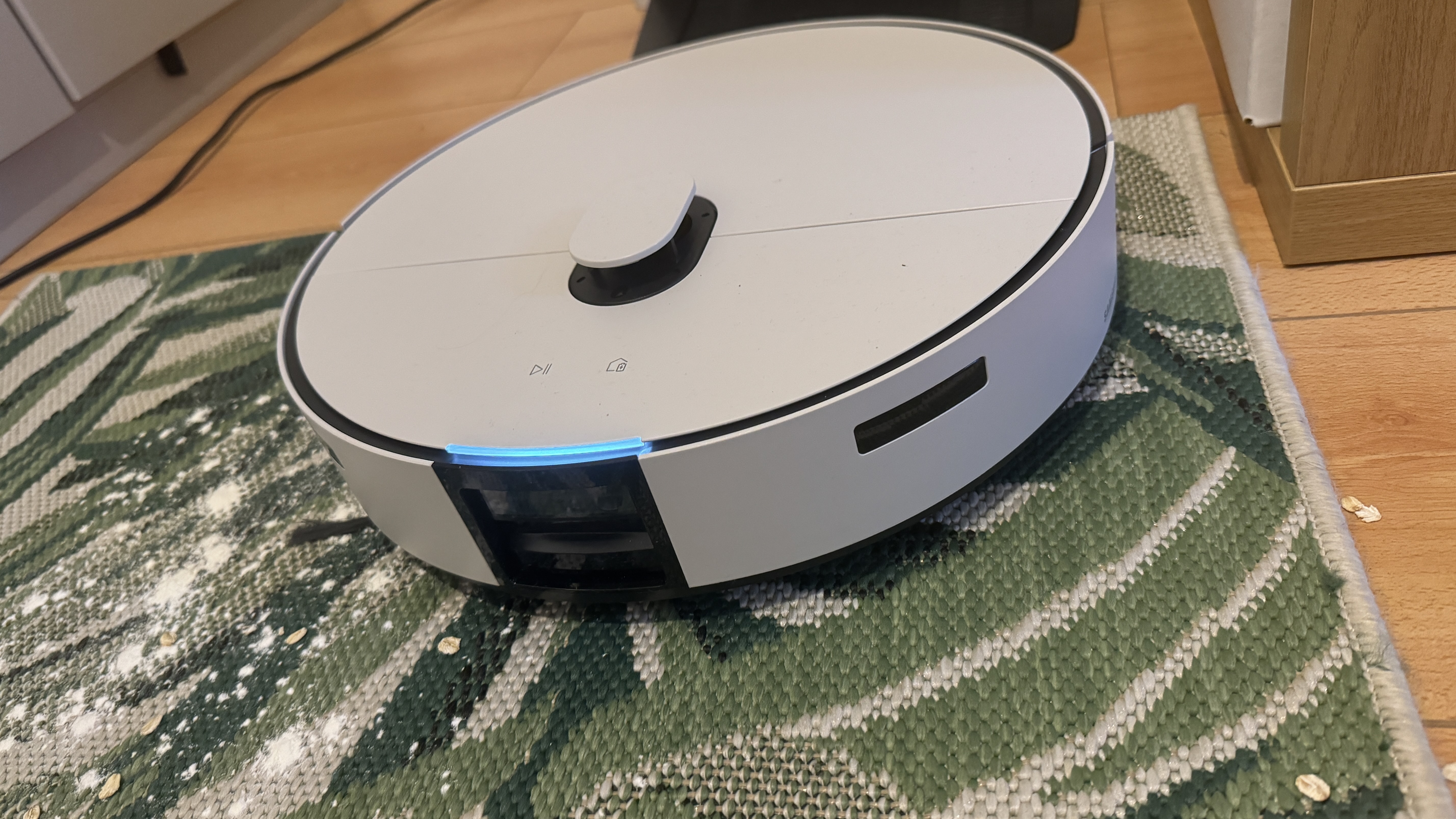
Mopping tests
If the robot vacuum has a mop function, we see how it copes with fresh liquid spillages as well as dried-on, sticky messes. To test this, we smear a tiny bit of ketchup on the floor and leave it to dry, and also spill a bit of soy sauce, then task the robot with a spot clean. We'll also look at how the robot tackles the issue of switching between vacuuming and mopping – will it reliably detect floor type, and pick up its mop pad when moving from hard floor onto carpet, for example?
Mapping tests
When we first get the robot set up, we'll see how long it takes to create a map of the home, and how accurate that map is. For subsequent runs, we'll keep an eye on how the robot navigates the space; if takes a logical route through the house, if it repeats already-clean areas, and so on.
Navigation tests
To assess object avoidance, we lay out a charge cable, a sock that's a similar color to the floor, and some fake pet poop, to see if it can reliably spot and avoid them. On the navigation front, we'll also test the robot vacuum's edge cleaning abilities – does it get right up to the edges of rooms, or leave a margin that needs manual cleaning.
General use tests
As well as these standardized tests, my reviewers integrate these robovacs into their daily cleaning setup, to get a feel for how effective and user-friendly they are in general. This includes assessing noise levels (when cleaning and also when self-emptying), how long they last on a single charge, and how regularly they have to return to the dock to self-empty or charge.
We'll dig into the app and gauge how well-designed, usable and intuitive it is, and how much control it offers. We'll also test any specific performance claims made by the manufacturer, as well as checking out any special features like built-in voice assistants and camera surveillance.
After at least two weeks of testing, we consolidate our findings and use them to judge who (if anyone) we'd recommend the robot vacuum to. We also compare the features and build quality to the price, to assess if the robot vacuum is good value for money.
Read more on how we test vacuum cleaners.
TechRadar robot vacuum coverage
Buying guides:
- Best robot vacuum for pet hair
- Best cheap robot vacuum
- Best vacuum cleaner
- Best cordless vacuum
- Best Dyson vacuum
- Best wet and dry vacuum
- Best Shark vacuum
Top reviews:
- Dreame D9 Max Gen 2 review
- Roborock Saros 10 review
- Ecovacs Deebot T30S review
- Eufy X10 Pro Omni review
- Roborock Saros 10R review
- Xiaomi X20+ review
- Dreame L40 Ultra review
- Roborock Saros Z70 review
- SwitchBot K11+ review
Explainers:
- How to choose a robot vacuum: what to look for
- Can a robot vacuum effectively mop your floors, too?
- How to properly take care of your robot vacuum cleaner
- 6 settings you should be changing on your robovac (but probably aren't)
- How to prep your home for a robot vacuum
- How to buy a robot vacuum: top tips
First-hand experience:
- 7 things I wish I'd known before getting my first robot vacuum
- I've been testing new robovacs for a year – this is my one key tip that could save you money when you buy
- I just watched a robot vacuum pick up a brush and sweep in a corner, and this might be the future of cleaning
- My haunted Roomba S9+ kept me up all night and iRobot says there’s no way to fix it
- Are cheap robot vacuums worth it? I've tested bots at all price points, and here's my take
Sign up for breaking news, reviews, opinion, top tech deals, and more.

Ruth is TechRadar's Homes Editor specializing in air (vacuum cleaners, fans, air purifiers), and hair (hair dryers, straighteners and stylers). She has been in consumer journalism since 2020, reviewing and writing about everything from outdoor kit to mattresses and wellness gadgets, with stints on Tom's Guide and T3.

